Prostaglandin Receptor
Prostaglandin receptors are a group of g-protein coupled receptor that exhibited a variety of functions in regulation of blood pressure and renal function; smooth muscle contraction; inhibition of plate aggregation; immune response etc.
Produkte für Prostaglandin Receptor
- Bestell-Nr. Artikelname Informationen
-
GC16838
(±)-Cloprostenol sodium salt
(±)-Cloprostenol-Natriumsalz (ICI 80996 Natriumsalz) ist ein starkes synthetisches Prostaglandin-Analogon, wirkt als Luteolytikum und ist ein PGF2α-Rezeptoragonist.
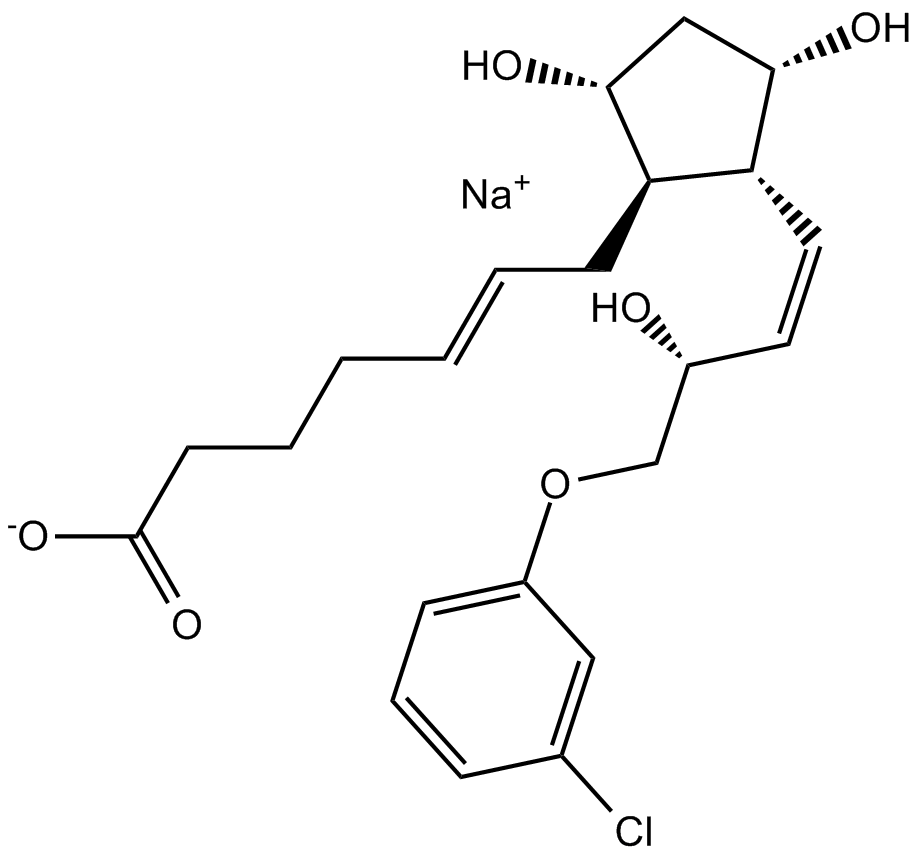
-
GC30743
(+)-Cloprostenol (D-Cloprostenol)
(+)-Cloprostenol (D-Cloprostenol) ist ein Prostaglandin F2α (PGF2α)-Analogon und zeigt eine selektive agonistische AktivitÄt am Prostaglandinrezeptor.
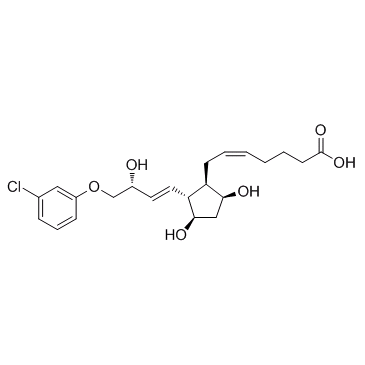
-
GC45259
(+)-Cloprostenol (sodium salt)
(+)-Cloprostenol (sodium salt) is a more water soluble, crystalline form of (+)-cloprostenol.

-
GC12750
(+)-Fluprostenol
(+)-Fluprostenol ist ein potenter Agonist von PTGER2.
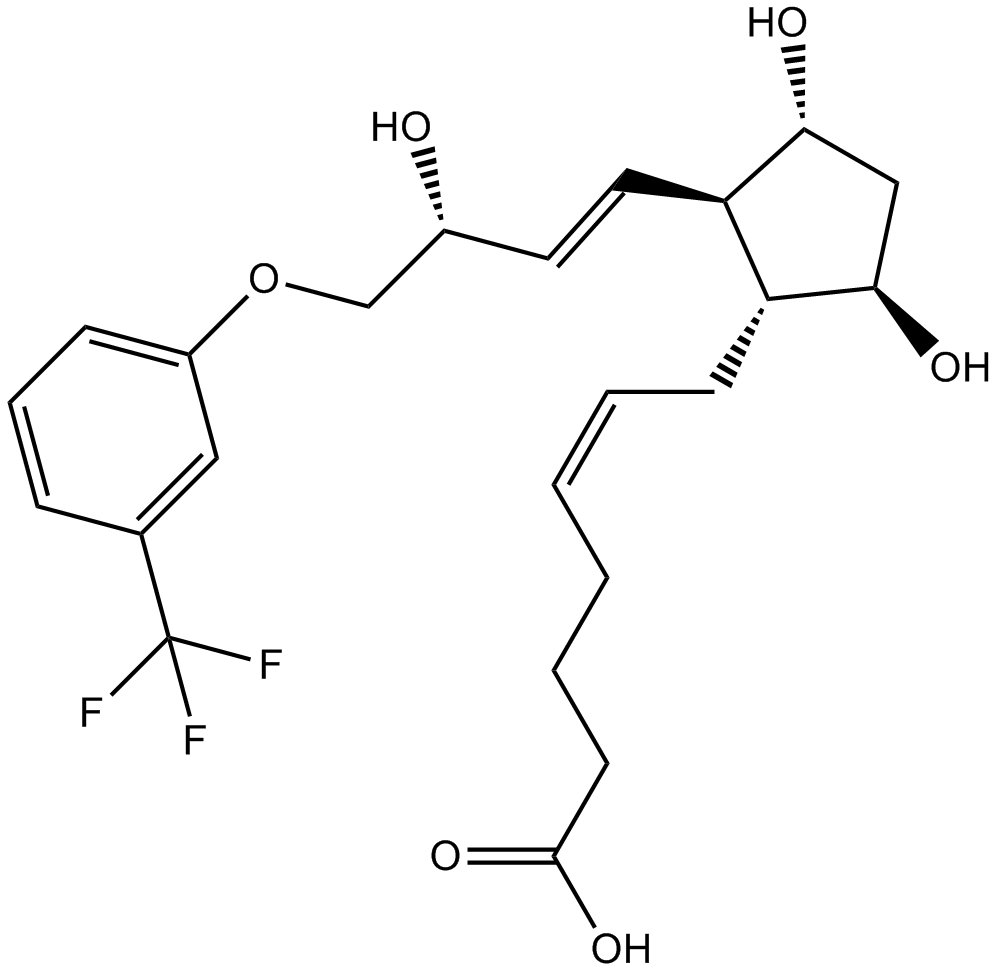
-
GC11133
16,16-Dimethyl Prostaglandin E2
derivative of prostaglandin E2
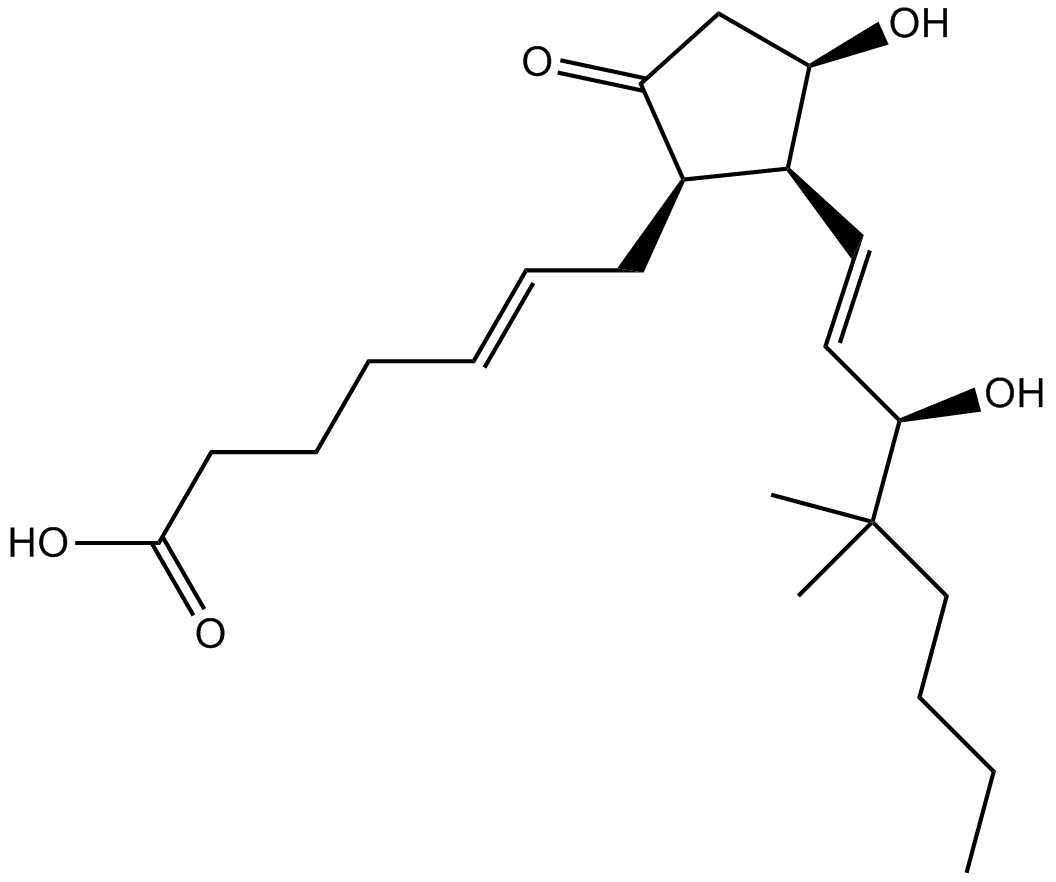
-
GC30561
2-(E-2-decenoylamino)ethyl 2-(cyclohexylethyl) sulfide
2-(E-2-Decenoylamino)ethyl 2-(Cyclohexylethyl)sulfid ist eine Verbindung, die stressinduzierte GeschwÜre und geringe ToxizitÄt hemmt und den Gehalt an Phospholipase A2 und Prostaglandin E2 bei Ratten mit Ulzerationen, die durch unter Wasser eingetauchten zurÜckhaltenden Stress verursacht wurden, aufrechterhalten kann.
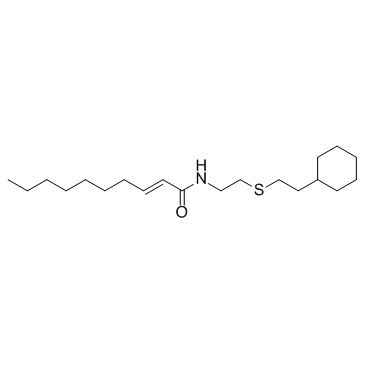
-
GC17719
5-trans U-46619
Prostaglandin E synthase inhibitor
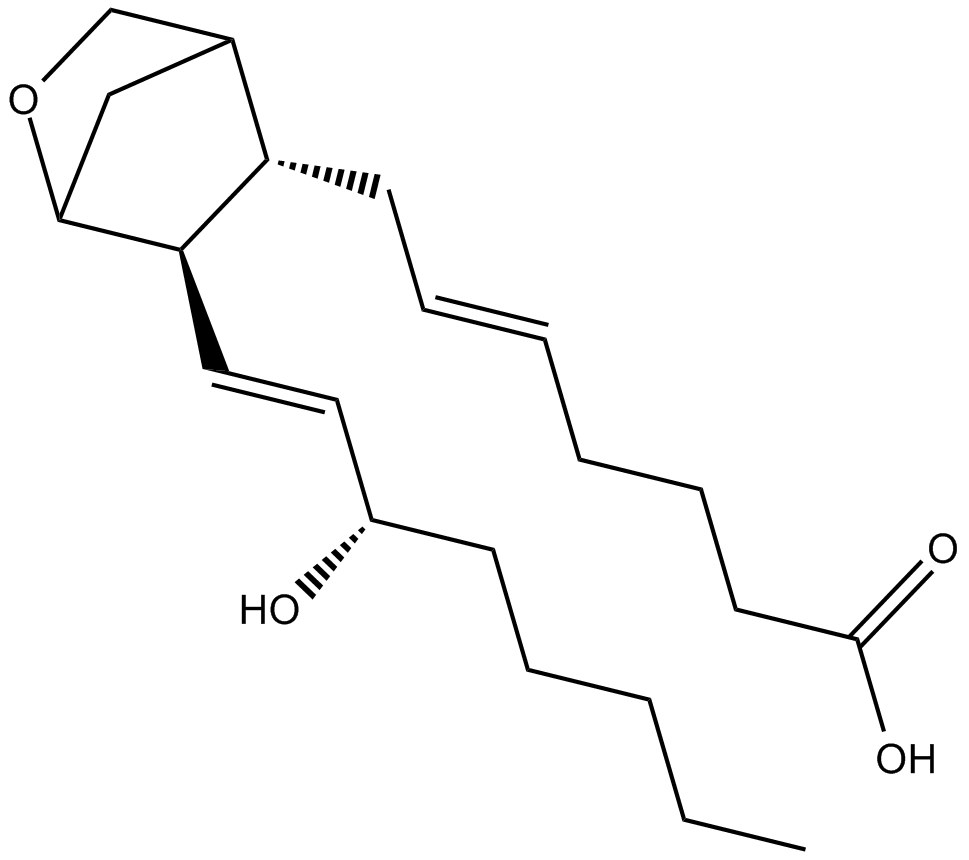
-
GC10623
ACS 67
analog of latanoprost (free acid),prostaglandin (PG) analog
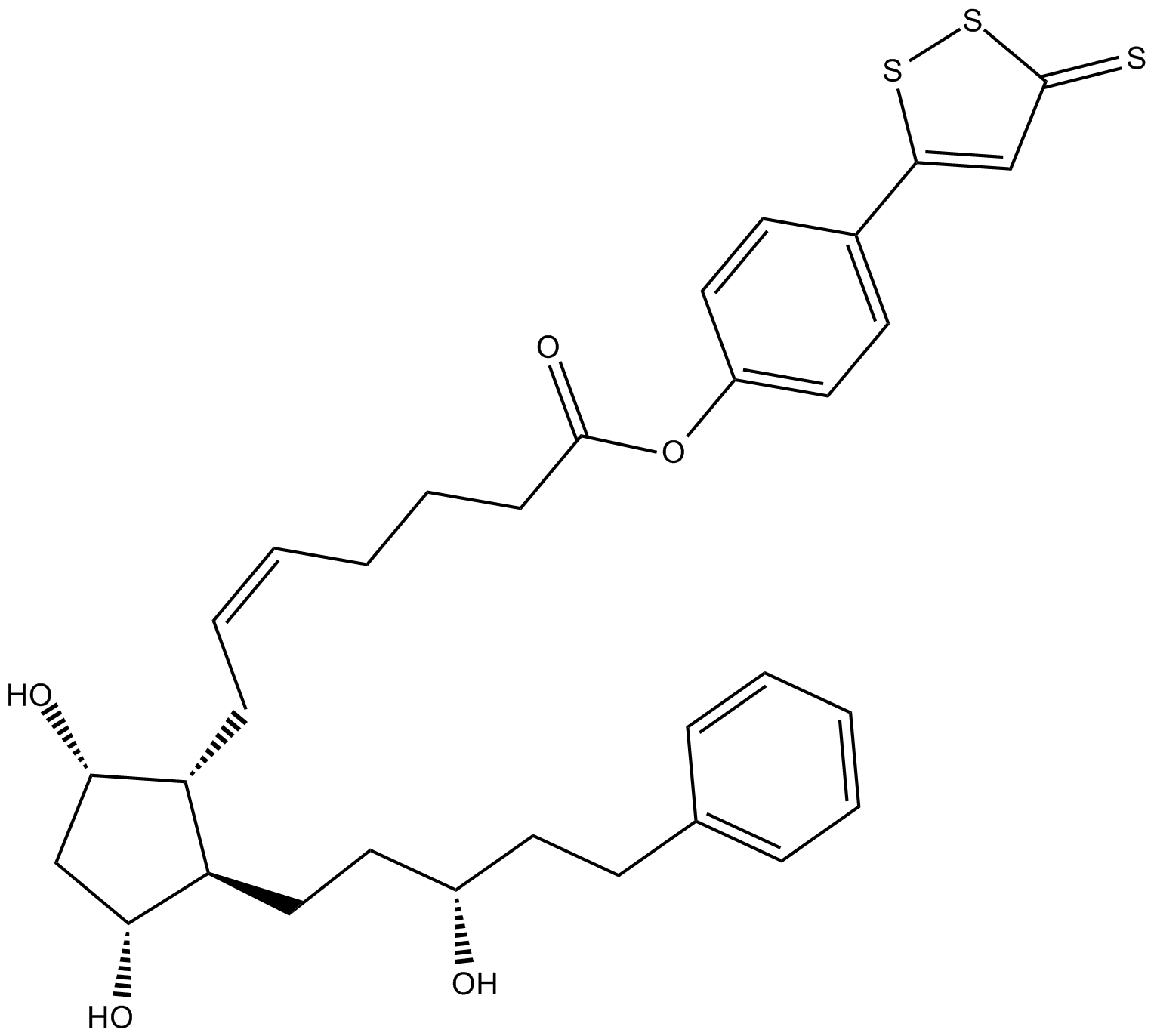
-
GC30572
Aganepag (AGN 210937)
Aganepag (AGN 210937) ist ein potenter Prostanoid-EP2-Rezeptoragonist mit einem EC50-Wert von 0,19 nM und zeigt keine AktivitÄt am EP4-Rezeptor.
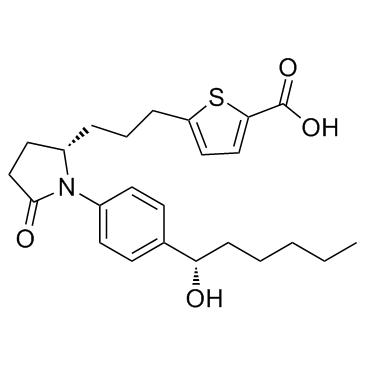
-
GC64435
Aganepag isopropyl
Aganepag-Isopropyl (AGN-210961) ist ein EP2-Agonist.
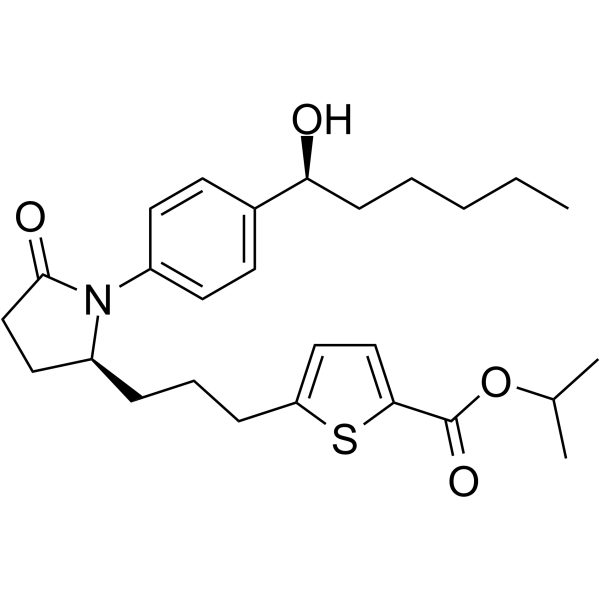
-
GC31972
AGN 210676 (Simenepag)
AGN 210676 (Simenepag) ist ein selektiver Prostaglandin-EP2-Agonist, extrahiert aus Patent US20070203222A1, Verbindungsbeispiel 23, hat einen EC50 von 5 nM.
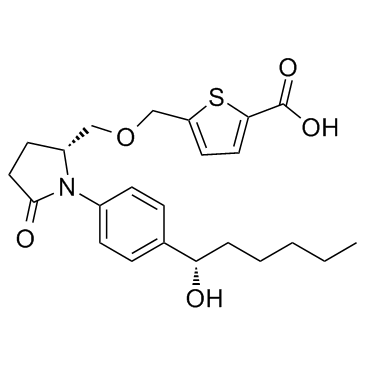
-
GC40750
Agnuside
Agnusid ist eine aus Vitex negundo isolierte Verbindung, die die entzÜndungsfÖrdernden Mediatoren PGE2 und LTB4 herunterreguliert und die Expression von Zytokinen mit antiarthritischer AktivitÄt reduziert.

-
GC17224
AH 23848 (calcium salt)
dual antagonist of TP1 and EP4 receptors
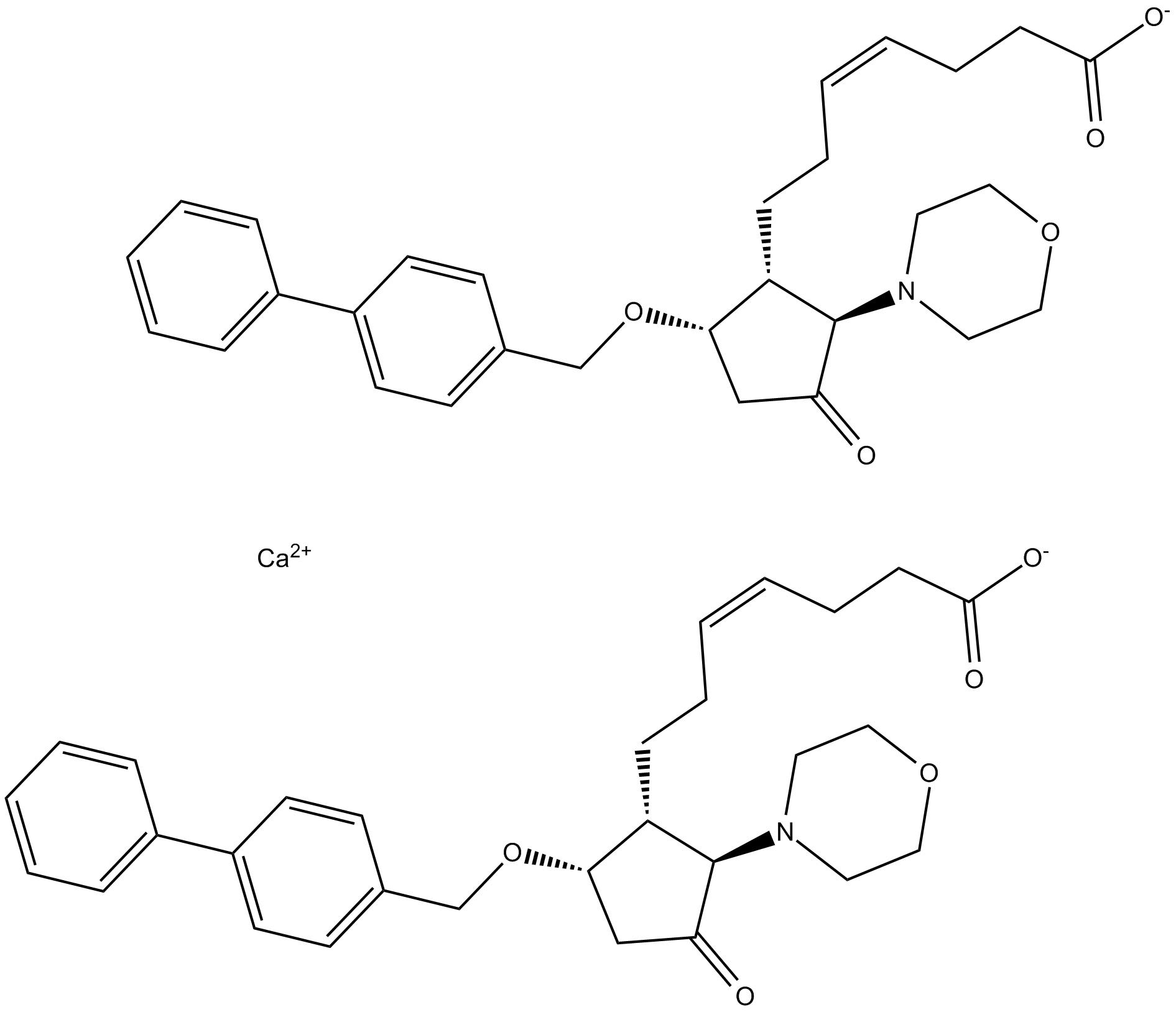
-
GC14879
AH 6809
An EP and DP receptor antagonist
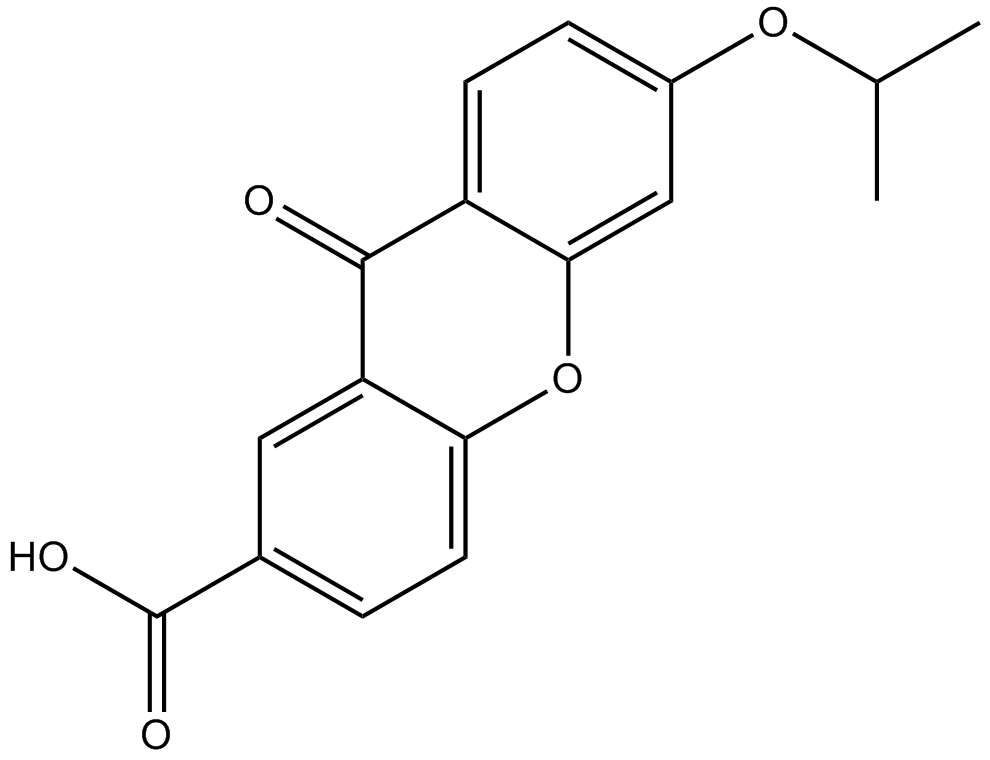
-
GC16895
AL 8810
AL 8810 ist ein 11β-Fluor-Analogon von PGF2α und wirkt als potenter und selektiver Antagonist des PGF2α-Rezeptors (FP-Rezeptor).
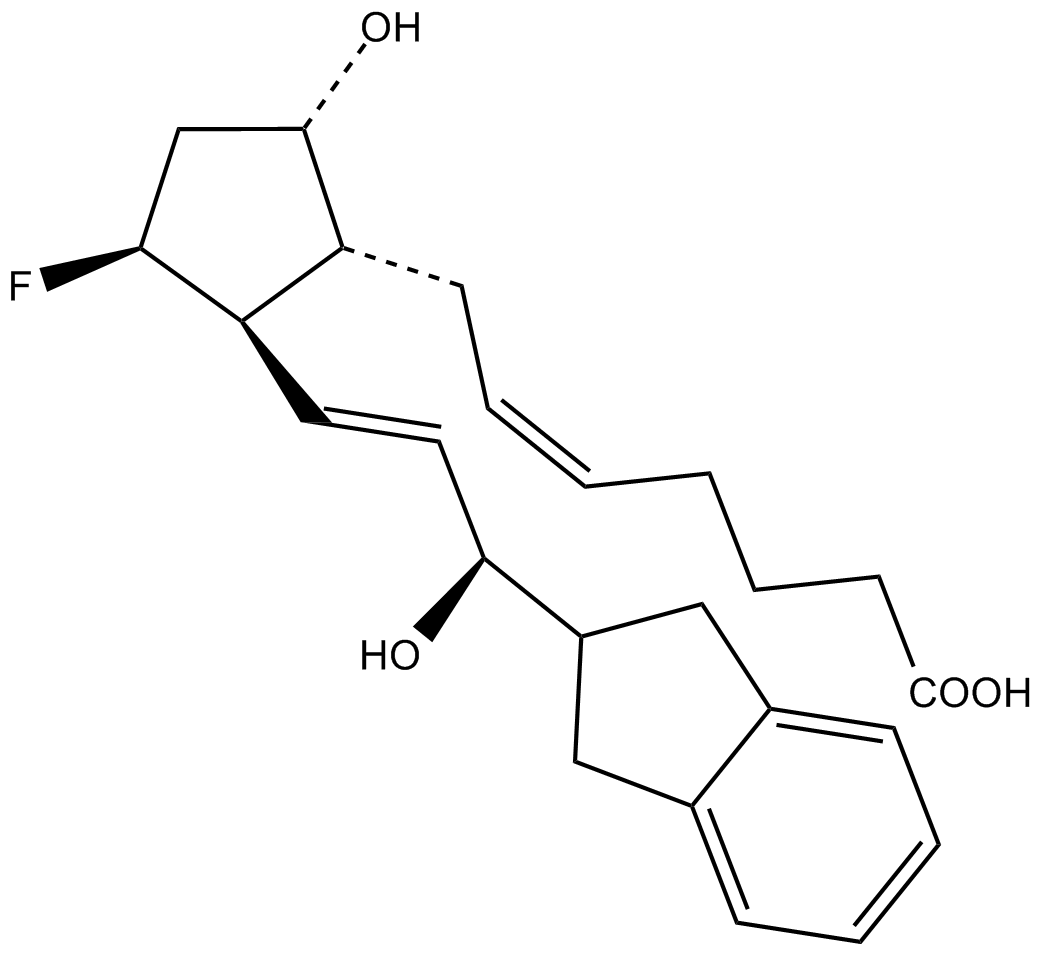
-
GC16566
AL 8810 isopropyl ester
lipid soluble, esterified prodrug form of AL 8810, a FP receptor antagonist
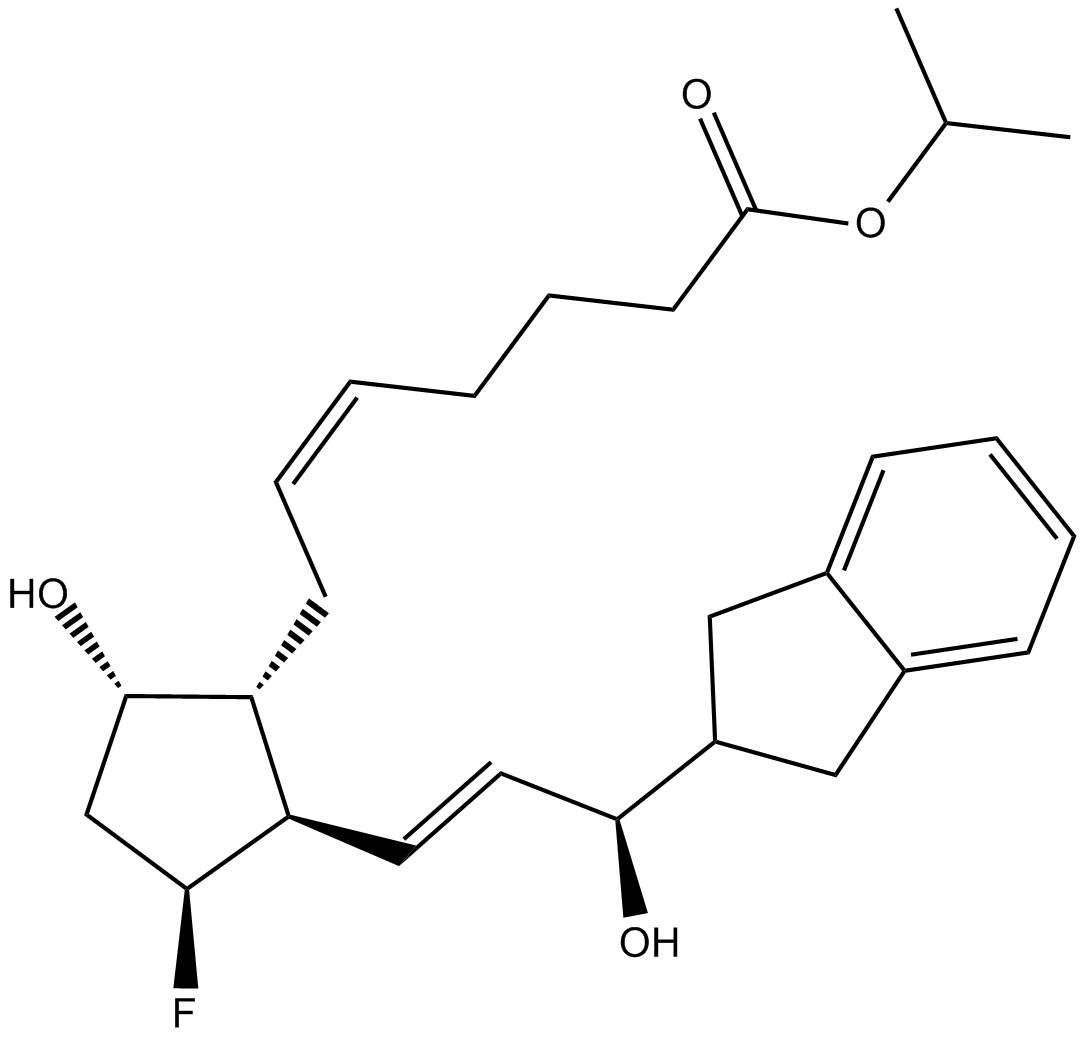
-
GC32558
Aligeron
Aligeron ist ein nicht-selektiver Prostaglandin (PG)-Antagonist und hat gefÄßerweiternde Eigenschaften.
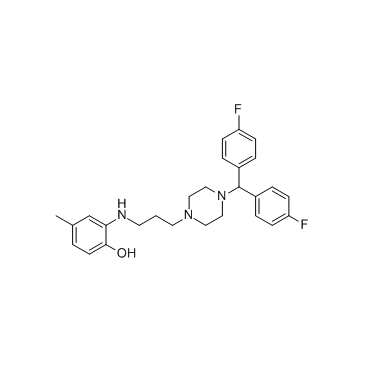
-
GC17347
Alprostadil
Alprostadil (Alprostadil) ist ein Prostanoidrezeptorligand mit Kis von 1,1 nM, 2,1 nM, 10 nM, 33 nM und 36 nM fÜr EP3, EP4, EP2, IP bzw. EP1 der Maus.
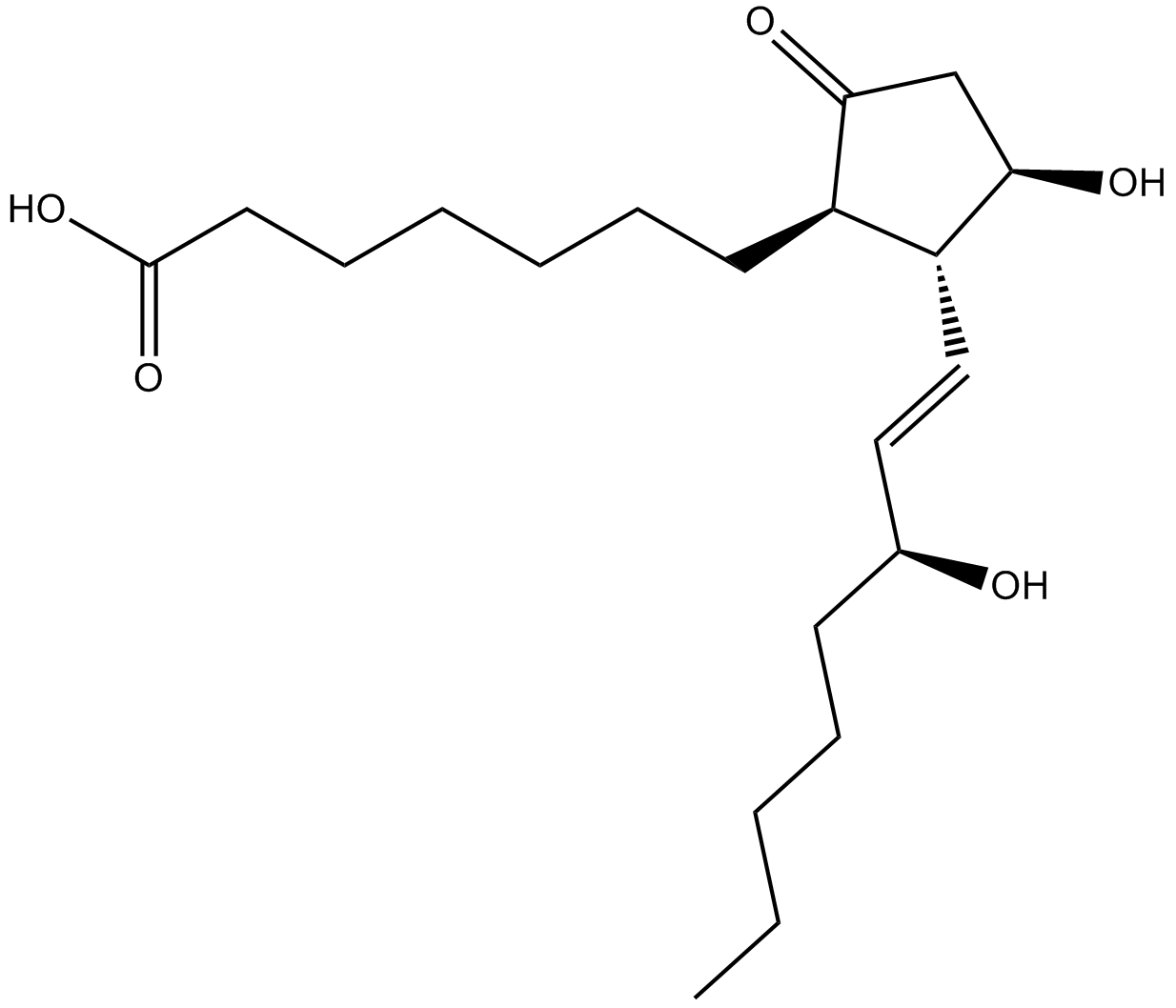
-
GC31718
AM211 (AM211 free acid)
AM211 (freie SÄure von AM211) ist ein potenter, selektiver und oral bioverfÜgbarer Antagonist des Prostaglandin D2 (PGD2)-Rezeptors Typ 2 (DP2) mit IC50-Werten von 4,9 nM, 7,8 nM, 4,9 nM, 10,4 nM fÜr Mensch, Maus, Meerschweinchen und Ratte DP2.
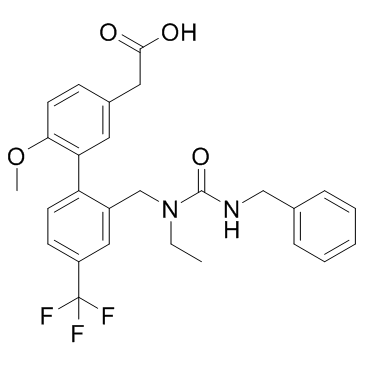
-
GC50240
AMG 853
AMG 853 (AMG 853) ist ein PhenylessigsÄurederivat.
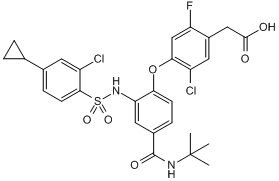
-
GC31830
AMG-009
AMG-009 ist ein potenter Antagonist von Prostaglandin D2 mit IC50 von 3 nM bzw. 12 nM fÜr CRTH2- bzw. DP-Rezeptoren.
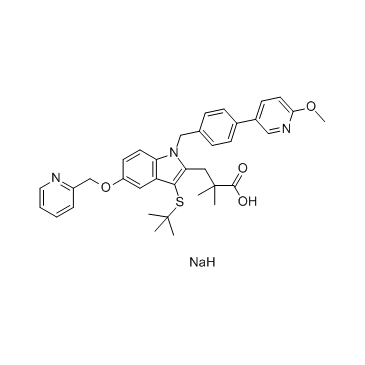
-
GC31702
Asapiprant (S-555739)
Asapiprant (S-555739) ist ein potenter und selektiver DP1-Rezeptorantagonist mit einem Ki von 0,44 nM.
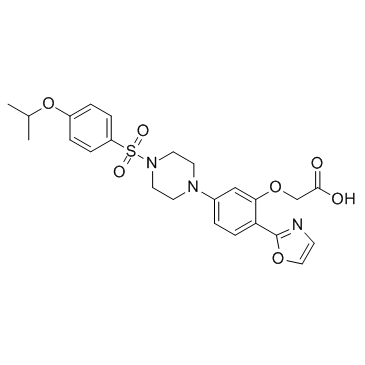
-
GC31456
AZ-1355
AZ-1355 ist eine wirksame lipidsenkende Verbindung, die auch die Thrombozytenaggregation in vivo hemmt und das VerhÄltnis von Prostaglandin I2/Thromboxan A2 in vitro erhÖht.
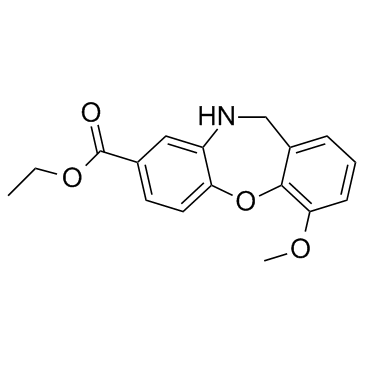
-
GC60611
AZ12672857
AZ12672857 ist ein oral aktiver Inhibitor von EphB4 (IC50=1,3 nM) und Src-Kinasen. AZ12672857 zeigt eine gute Hemmung der Proliferation von c-Src-transfizierten 3T3-Zellen (IC50 = 2 nM) sowie eine Autophosphorylierung von EphB4 in transfizierten CHO-K1-Zellen (IC50 = 9 nM).
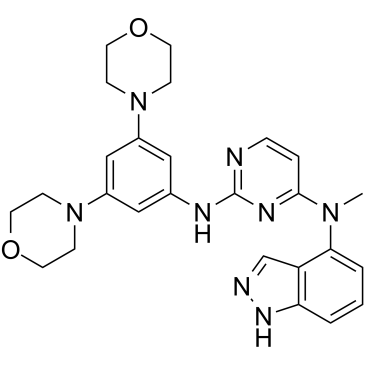
-
GC12434
AZD1981
AZD1981 ist ein potenter und selektiver CRTh2-Antagonist; verdrÄngt radioaktiv markiertes PGD2 von humanem rekombinantem DP2 mit hoher Potenz (pIC50 = 8,4).
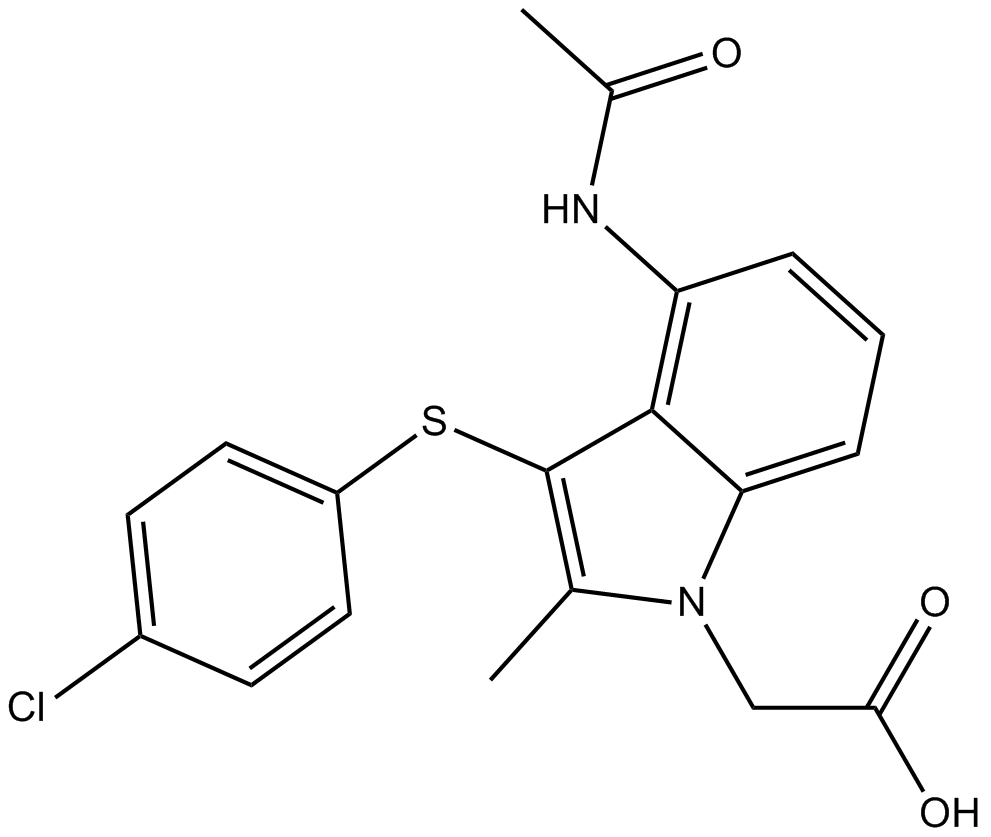
-
GC61581
BAY 73-1449
BAY 73-1449 ist ein selektiver Antagonist des Prostacyclin-Rezeptors (IP) mit hoher Wirksamkeit (IC50 von weniger als 0,1 nM) in cAMP-Assays in humanen HEL-Zellen und Ratten-DRG.
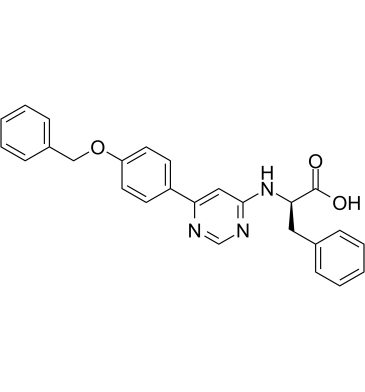
-
GC15640
BAY u3405
BAY u3405 ist ein selektiver Thromboxan A2 (TxA2, IC50=14 nM)-Antagonist, der auch CRTH2 (IC50=113 nM) antagonisiert, indem er die PGD2-Bindung hemmt.
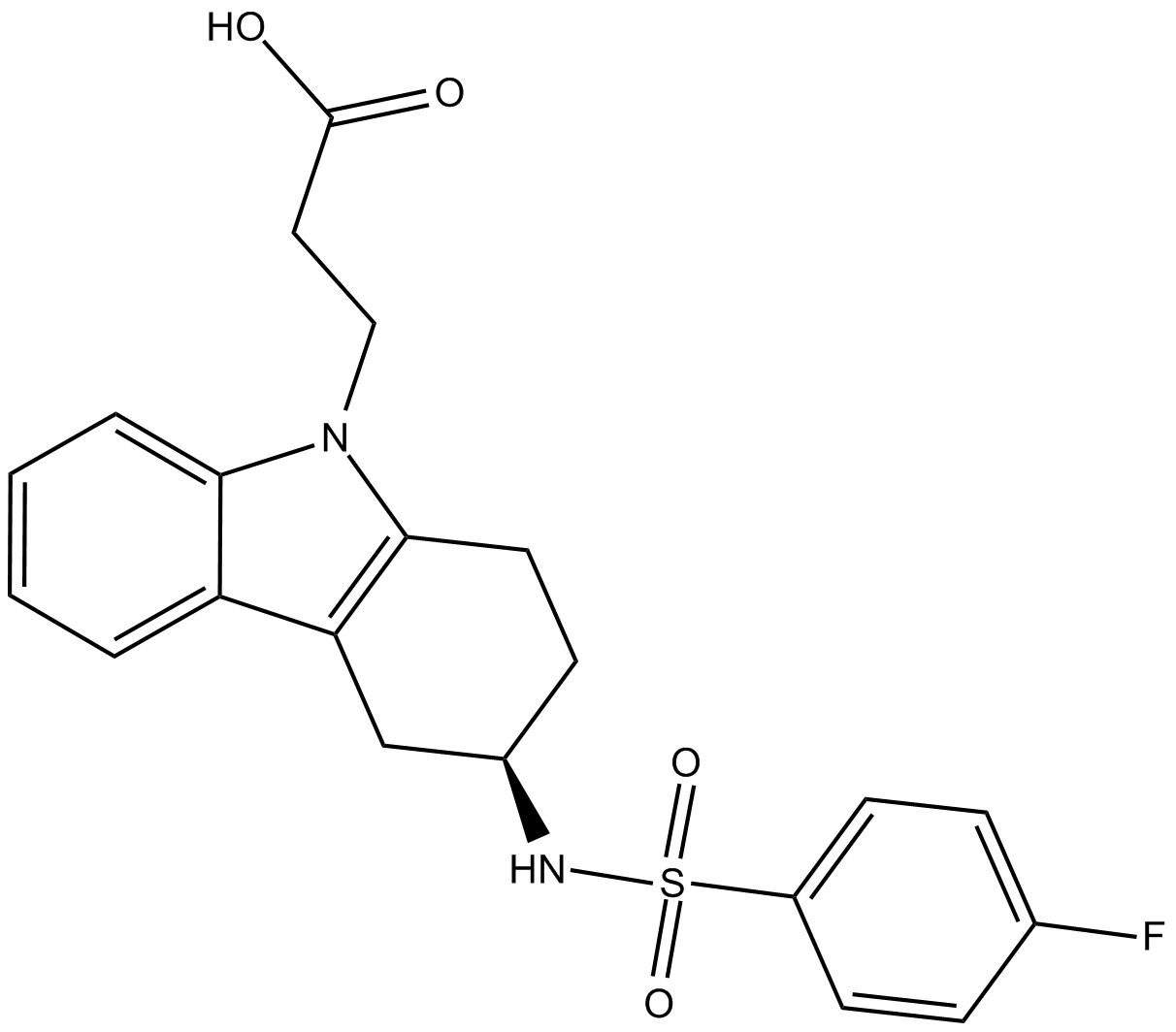
-
GC64958
BAY-1316957
BAY-1316957 ist ein potenter, selektiver und oral aktiver Prostaglandin-E2-Rezeptor-Subtyp-4 (EP4-R)-Antagonist mit einem IC50-Wert von 15,3 nM fÜr humanen EP4-R.
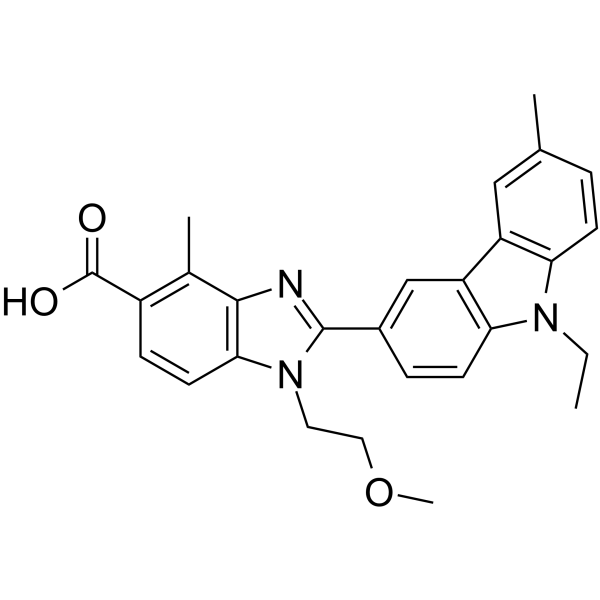
-
GC31872
Benorilate (Benoral)
Benorylat (Salipran) ist das Veresterungsprodukt von Paracetamol und AcetylsalicylsÄure.
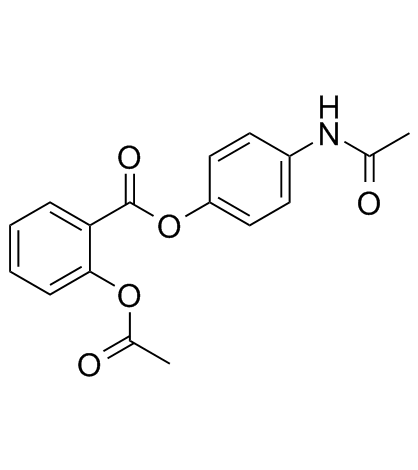
-
GC38891
Beraprost sodium
Beraprost-Natrium, ein Prostacyclin-Analogon, ist ein stabiles und oral aktives Prodrug von PGI2.
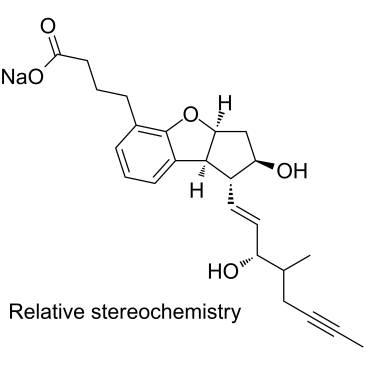
-
GC42927
BGC 20-1531 (hydrochloride)
BGC 20-1531 is a potent and selective antagonist of the prostaglandin E2 receptor subtype 4 (EP4) with Ki values of 11.7, >10,000, and >10,000 nM for EP4, EP2, and EP3, respectively.

-
GC62867
BGC-20-1531 free base
Die freie Base von BGC-20-1531 (PGN 1531) ist ein potenter und selektiver Antagonist des Prostanoid-EP4-Rezeptors mit einem pKB-Wert von 7,6.
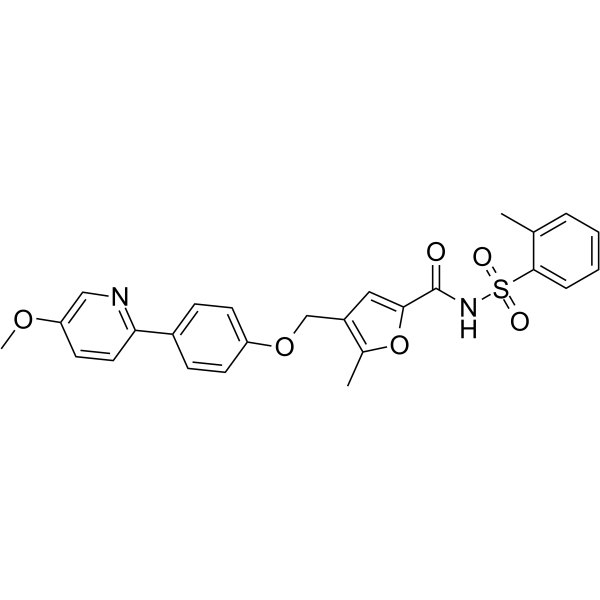
-
GC31757
BI-671800
BI-671800 ist ein hochspezifischer und potenter Antagonist des chemoattraktiven rezeptorhomologen MolekÜls auf Th2-Zellen (DP2/CRTH2) mit IC50-Werten von 4,5 nM und 3,7 nM fÜr die PGD2-Bindung an CRTH2 in hCRTH2- bzw. mCRTH2-transfizierten Zellen .
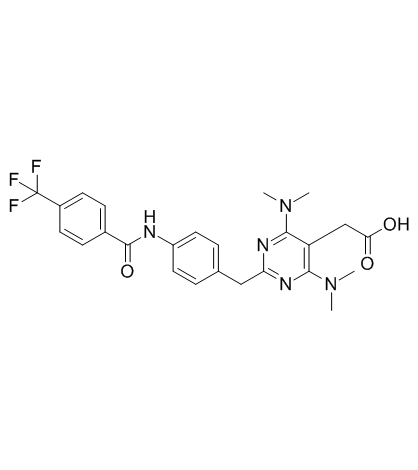
-
GC12687
Bimatoprost
Bimatoprost ist ein Prostaglandin-Analogon, das topisch (als Augentropfen) zur Kontrolle des Fortschreitens des Glaukoms und zur Behandlung von Augenhochdruck angewendet wird.
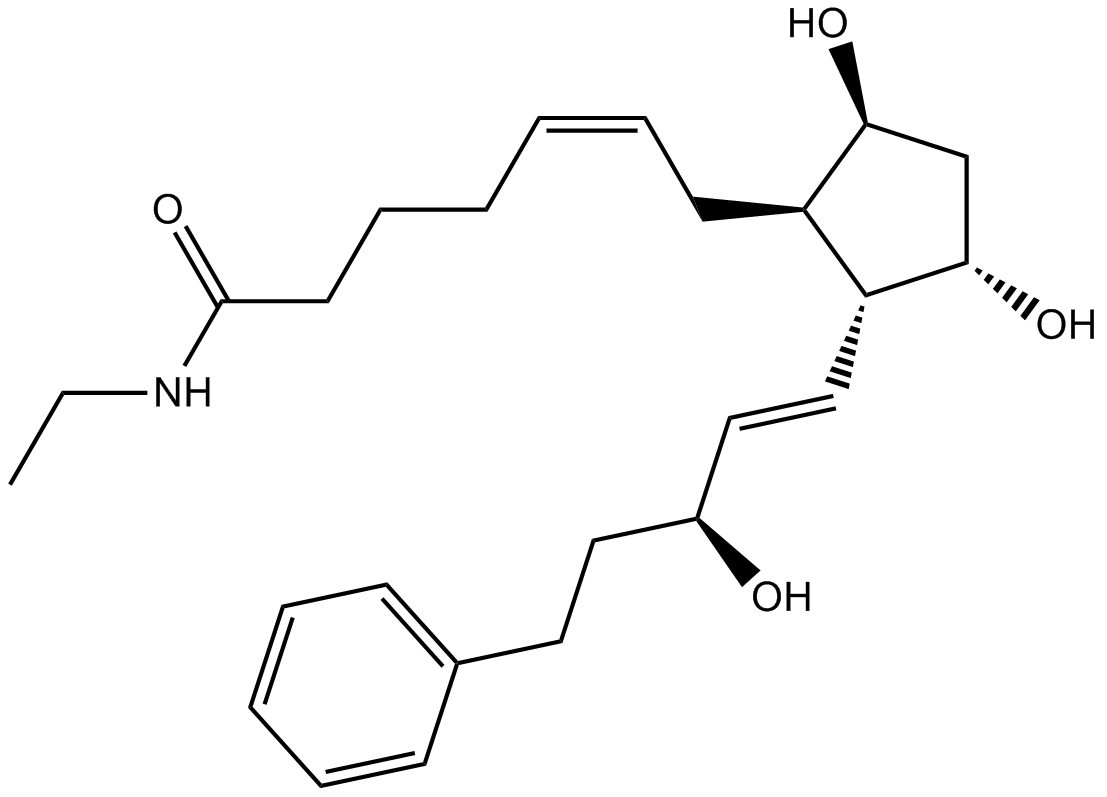
-
GC14758
BM 567
dual acting antithrombogenic agent, acting as an inhibitor of thromboxane A2 (TXA2) synthase and as an antagonist of the TP receptor
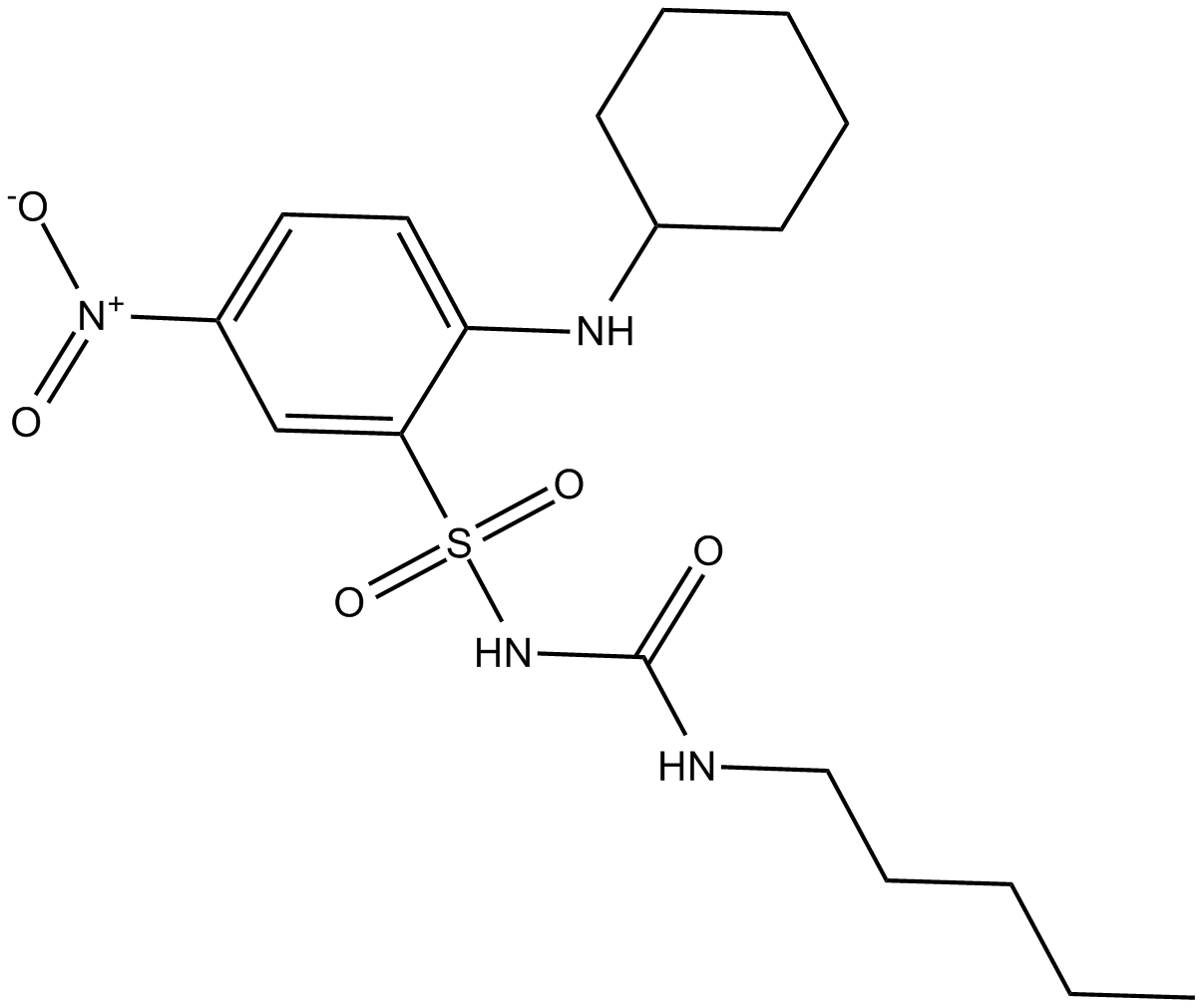
-
GC11820
BMY 45778
partial agonist at IP1 prostacyclin receptors
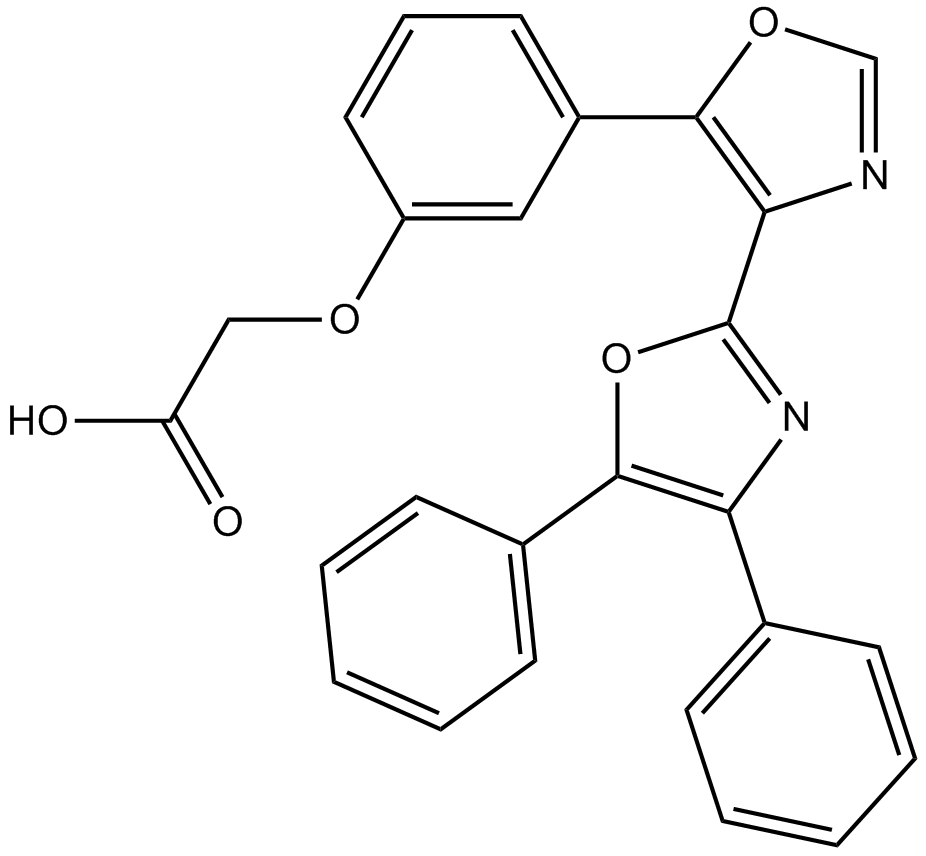
-
GC32002
Bunaprolast (U66858)
Bunaprolast (U66858) (U66858) ist ein starker Inhibitor der LTB4-Produktion in menschlichem Vollblut.
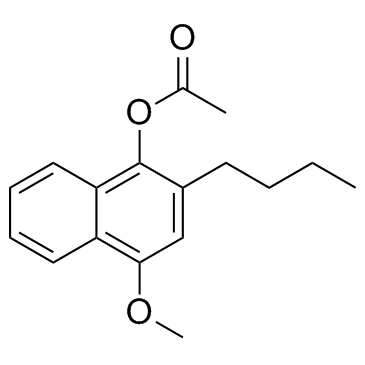
-
GC16539
Butaprost
Butaprost ist ein selektiver Prostaglandin-E-Rezeptor (EP2)-Agonist mit einem EC50 von 33 nM und einem Ki von 2,4 μM fÜr den murinen EP2-Rezeptor.

-
GC14212
BW 245C
BW 245C ist ein prostanoider DP-Rezeptor (DP1)-Agonist, der zur Behandlung von SchlaganfÄllen eingesetzt wird.
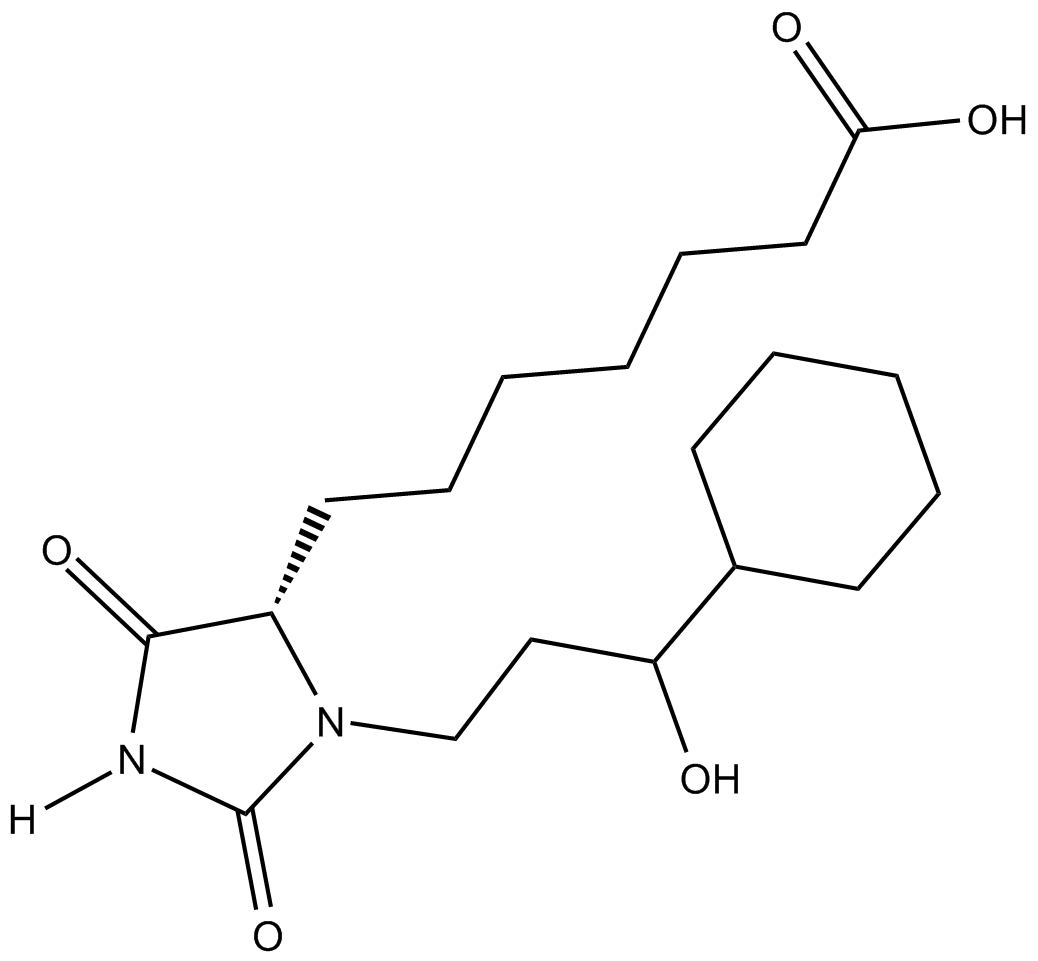
-
GC14859
BW 246C
DP receptor agonist
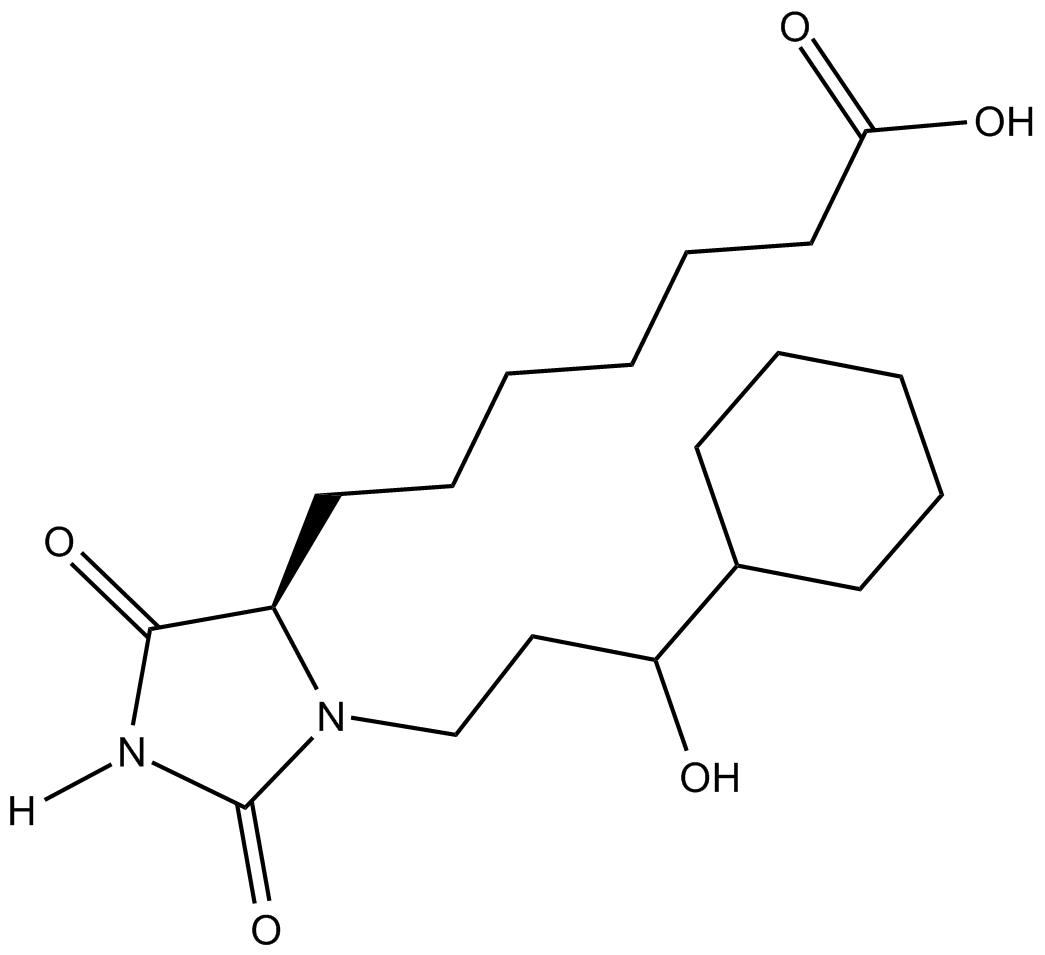
-
GC17348
BW A868C
BW A868C, eine Hydantoinverbindung, ist ein strukturelles Analogon von BW245C.
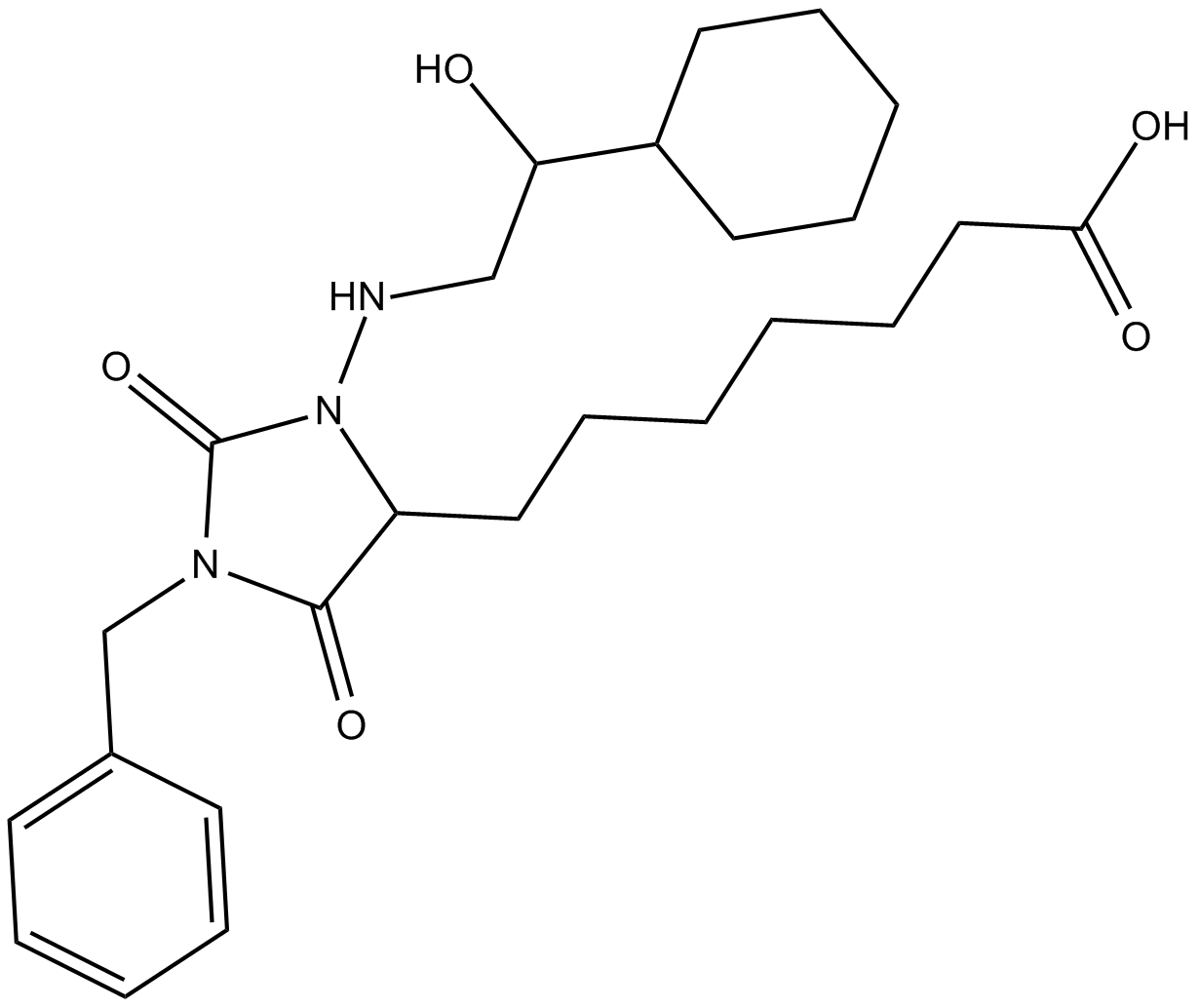
-
GC32487
Carbacyclin (Carbaprostacyclin)
Carbacyclin (Carbaprostacyclin) ist ein PGI2-Analogon, wirkt als Prostacyclin (PGI2)-Rezeptoragonist und Vasodilatator und hemmt wirksam die Thrombozytenaggregation.
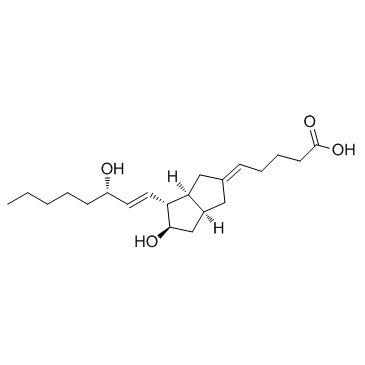
-
GC50450
Carboprost tromethamine
Carboprosttromethamin ist das synthetische 15-Methyl-Analogon von Prostaglandin F2α.
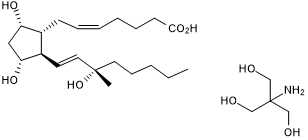
-
GC18318
CAY10441
CAY10441 ist ein potenter und selektiver IP (Prostacyclin)-Rezeptorantagonist.
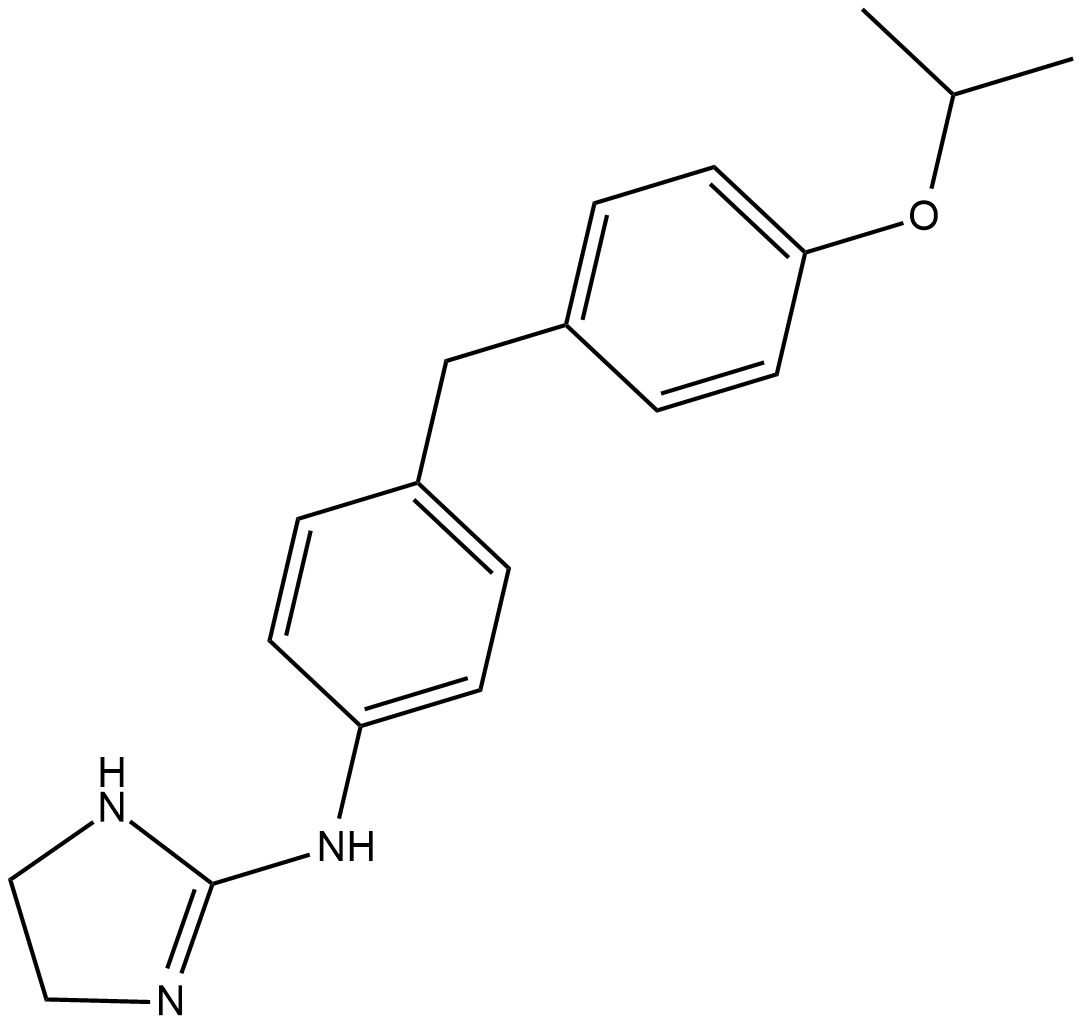
-
GC35620
CAY10471 Racemate
CAY10471 Racemate (TM30089 Racemate) ist ein potenter und hochselektiver Prostaglandin-D2-Rezeptor-CRTH2-Antagonist mit einem Ki von 0,6 nM fÜr hCRTH2, selektiv gegenÜber menschlichem Thromboxan-A2-Rezeptor TP (Ki, >10000 nM) oder PGD2-Rezeptor DP (Ki, 1200 nM ).
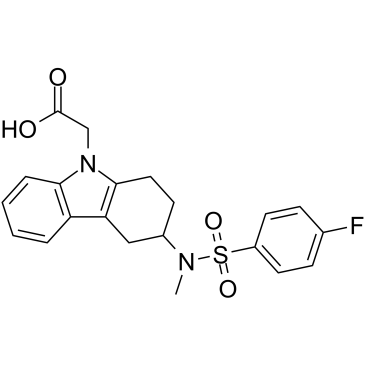
-
GC18678
CAY10595
CAY10595 ist ein potenter Antagonist des CRTH2/DP2-Rezeptors, der mit einem Ki von 10 nM an den menschlichen Rezeptor bindet.
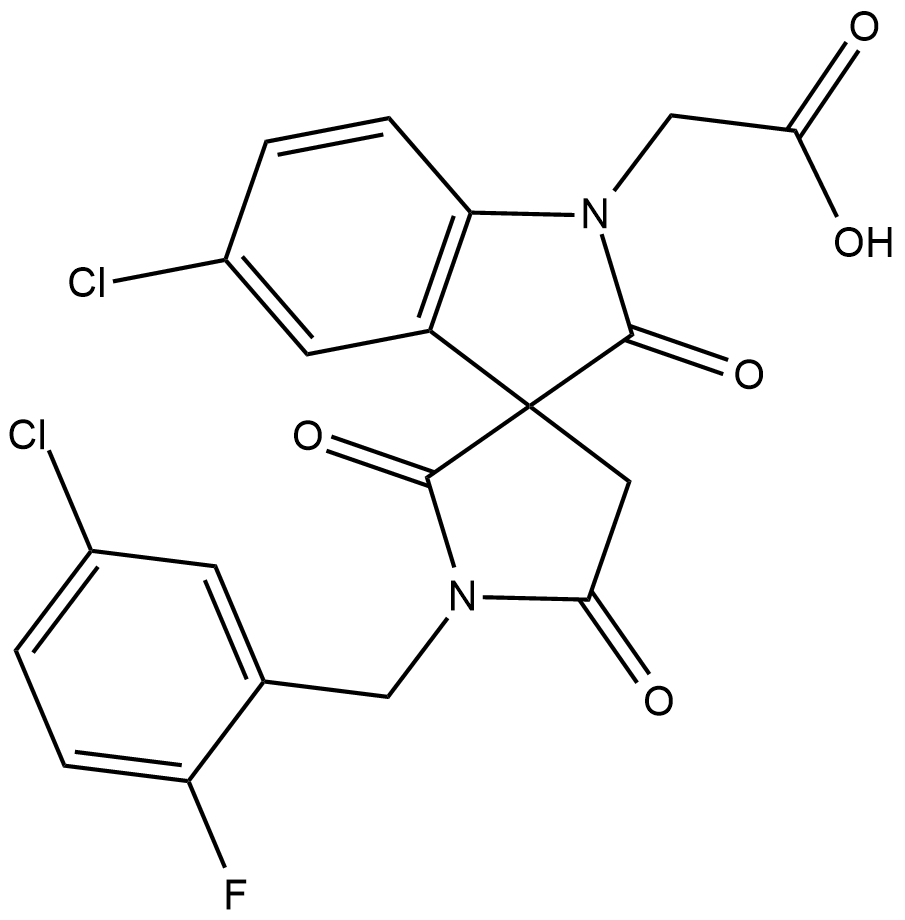
-
GC61805
Cefminox sodium
Cefminox-Natrium (MT-141) ist ein halbsynthetisches Cephamycin, das ein breites Spektrum an antibakterieller AktivitÄt aufweist.
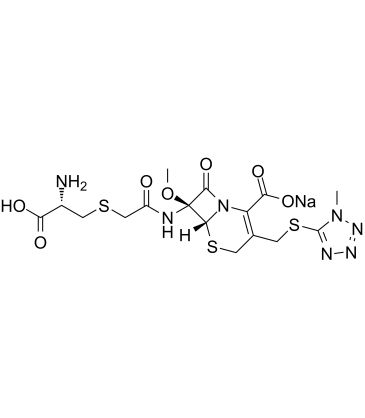
-
GC31981
CGS 15435
CGS 15435, ein potenter Thromboxan (TxA2)-Synthetase-Inhibitor mit einem IC50 von 1 nM, hat eine 100.000-fach hÖhere SelektivitÄt fÜr Tx-Synthetase als fÜr Cyclooxygenase-, PGI2-Synthetase- und Lipoxygenase-Enzyme.
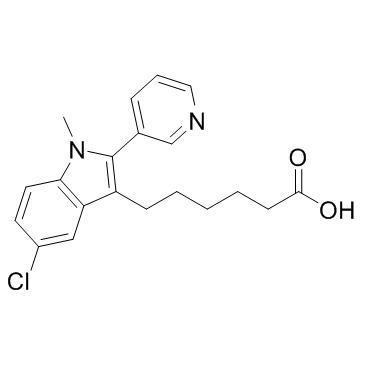
-
GC31994
CI-949
CI-949 ist ein Inhibitor der allergischen Mediatorfreisetzung, der die Freisetzung von Histamin, Leukotrien C4/D4 (LTC4/LTD4) und Thromboxan B2 (TXB2) mit IC50-Werten von 11,4 μM, 0,5 μM bzw. 0,1 μM hemmt.
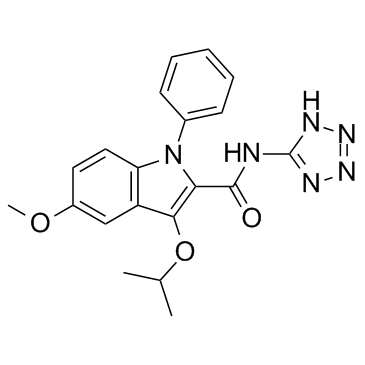
-
GC10771
CJ-023423
CJ-023423 (CJ-023423) ist ein selektiver EP4-Rezeptorantagonist, dessen physiologischer Ligand Prostaglandin E2 (PGE2) ist.
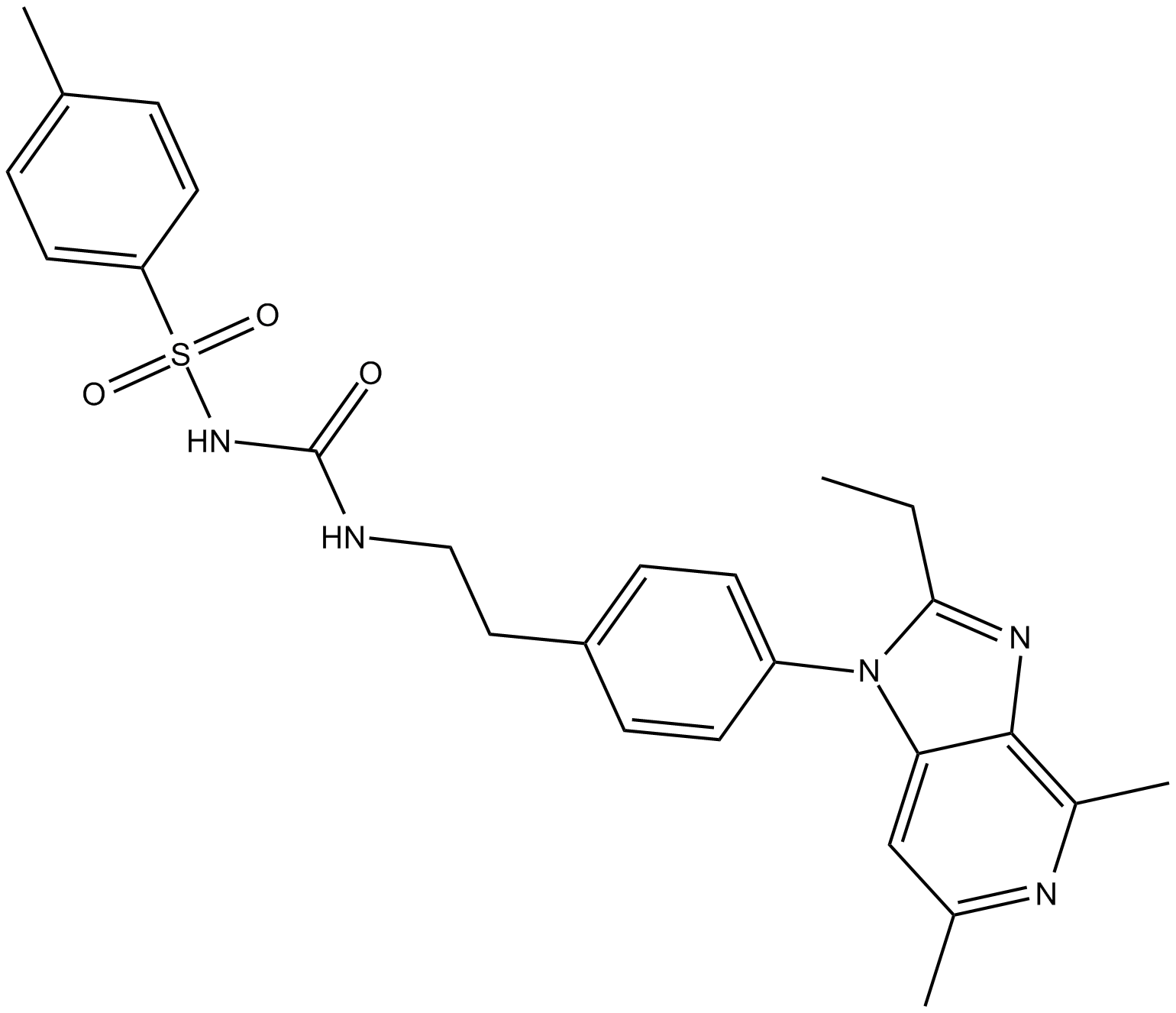
-
GC13284
CJ-42794
CJ-42794 (CJ-042794) ist ein potenter, oral aktiver, selektiver Prostaglandin E-Rezeptor 4 (EP4)-Antagonist mit einem IC50-Wert von 10 nM, der 200-mal selektiver ist als EP1, EP2 und EP3.
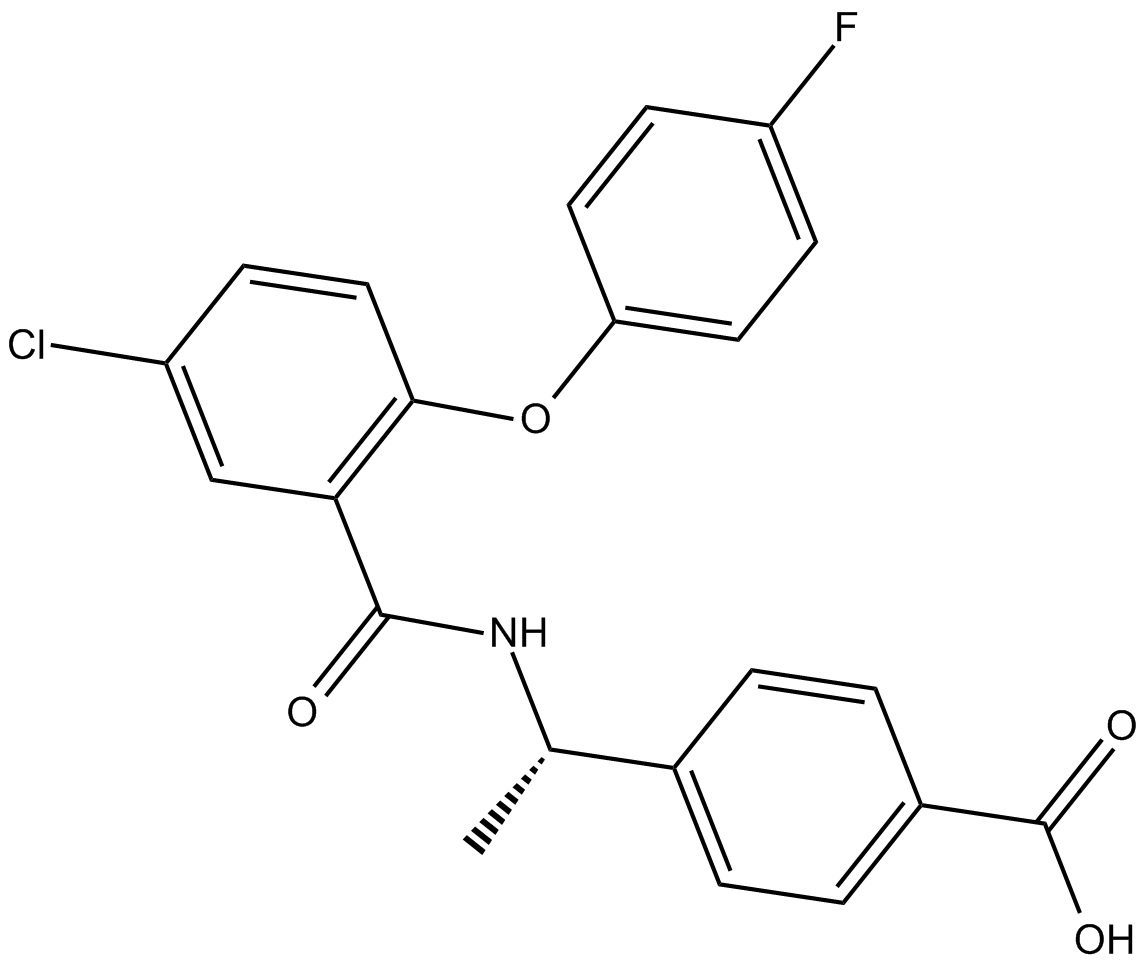
-
GC31903
CRTh2 antagonist 1
CRTh2-Antagonist 1 ist ein CRTh2-Antagonist mit einem IC50 von 89 nM.
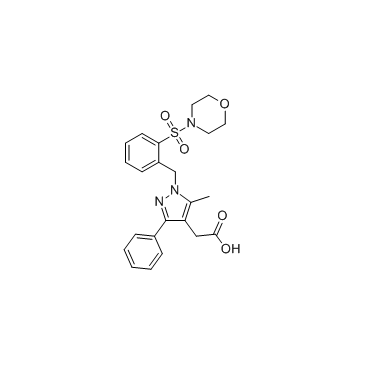
-
GC31998
CRTH2-IN-1 (Ramatroban analog)
CRTH2-IN-1 (Ramatroban-Analogon) (Ramatroban-Analogon) ist ein selektiver Prostaglandin-D2-Rezeptor-DP2 (CRTH2)-Antagonist mit einem IC50 von 6 nM in einem humanen DP2-Bindungsassay.
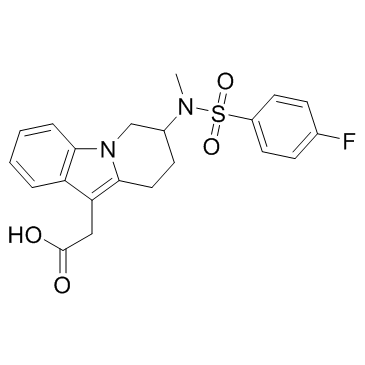
-
GC38763
Daltroban
Daltroban (BM-13505) ist ein selektiver und spezifischer Thromboxan A2 (TXA2)-Rezeptorantagonist.
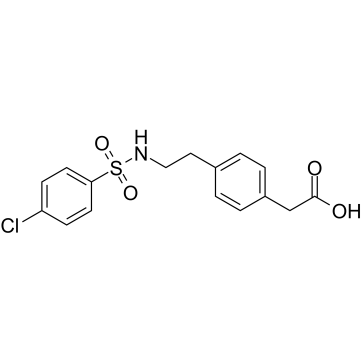
-
GC38764
Darbufelone
Darbufelon ist ein dualer Inhibitor der zellulÄren PGF2α- und LTB4-Produktion.
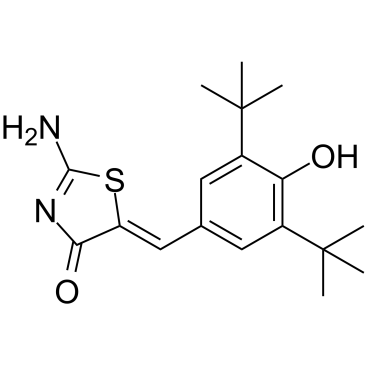
-
GC30604
Darbufelone mesylate (CI-1004 mesylate)
Darbufelon-Mesylat (CI-1004-Mesylat) (CI-1004-Mesylat) ist ein dualer Inhibitor von zellulÄrem PGF2α und LTB4-Produktion.
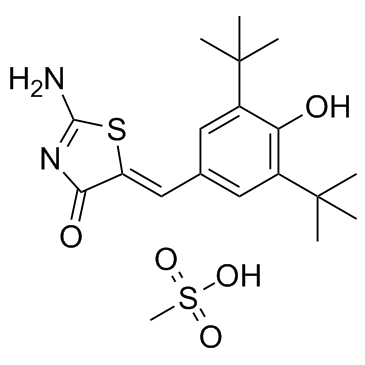
-
GC38902
Dazoxiben
Dazoxiben ist ein potenter und oral aktiver Thromboxan (TX)-Synthase-Hemmer.
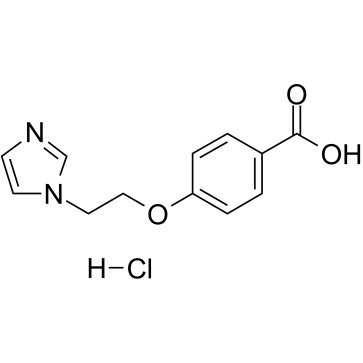
-
GC50393
DG 041
DG 041 ist ein potenter, hochaffiner und selektiver EP3-Rezeptorantagonist mit IC50-Werten von 4,6 nM bzw. 8,1 nM im Bindungs- bzw. FLIPR-Assay.
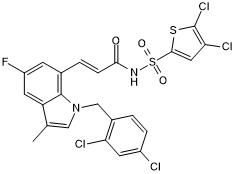
-
GC30370
Dinoprost (Prostaglandin F2a)
Dinoprost (Prostaglandin F2a) (Prostaglandin F2α) ist ein oral wirksamer, potenter Prostaglandin F (PGF)-Rezeptor (FP-Rezeptor)-Agonist.

-
GC10673
E7046
E7046 ist ein oral bioverfÜgbarer und spezifischer EP4-Antagonist mit einem IC50 von 13,5 nM und einem Ki von 23,14 nM.
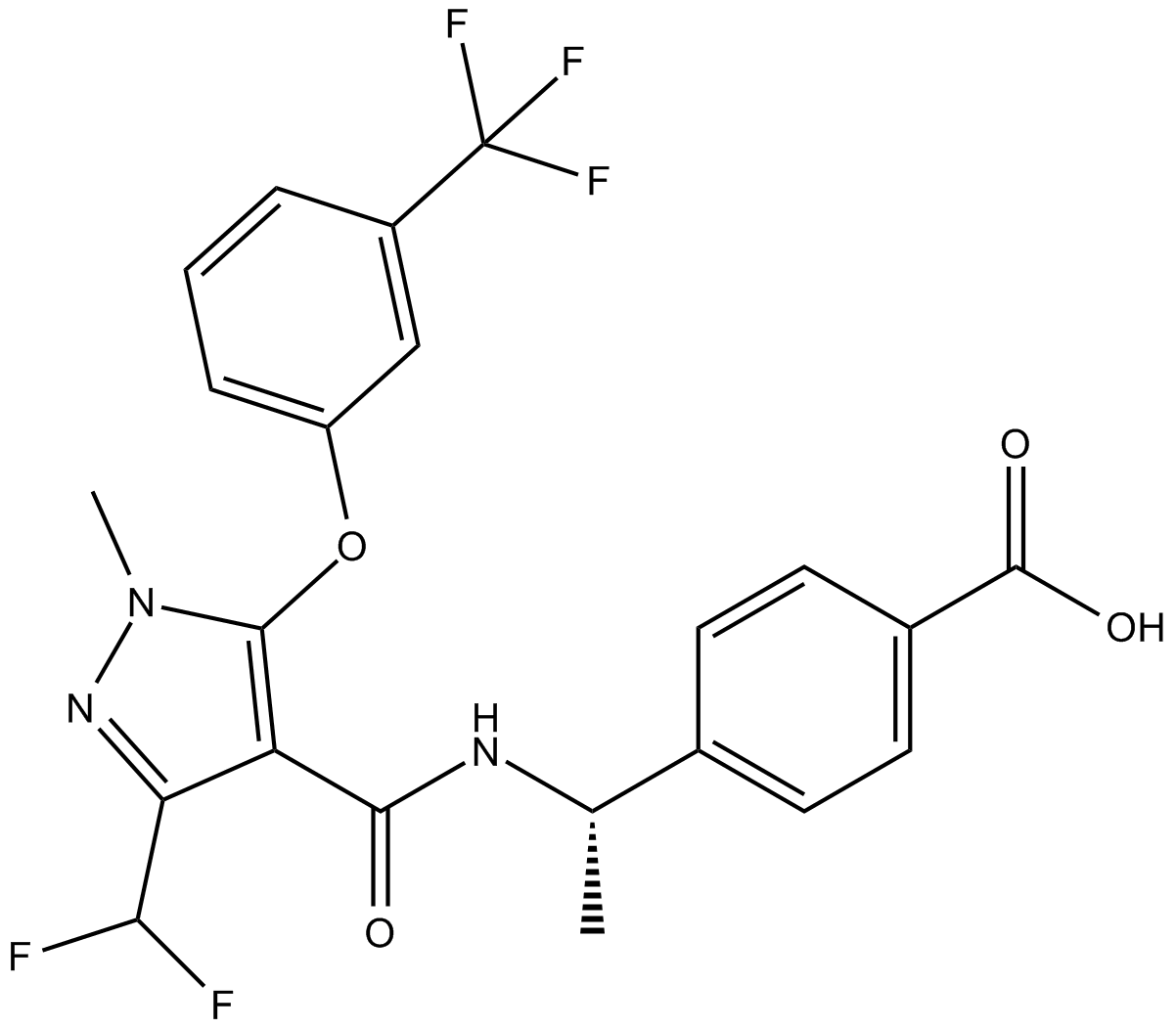
-
GC31202
EP1-antanoist-1
EP1-Antanoist-1 ist ein EP1-Antagonist mit einem pKi von 7,54 und einem pIC50 von 8,5.
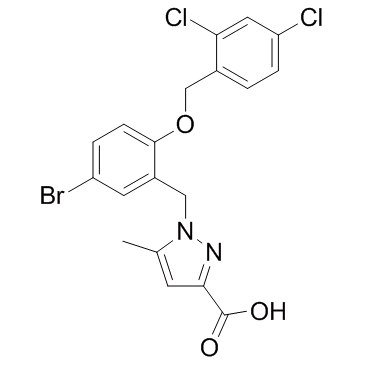
-
GC65317
EP2 receptor antagonist-1
Der EP2-Rezeptor-Antagonist-1 (Verbindung 1) ist ein potenter, reversibler und Agonisten-abhÄngiger allosterischer Prostaglandin-EP2-Rezeptor-Antagonist.
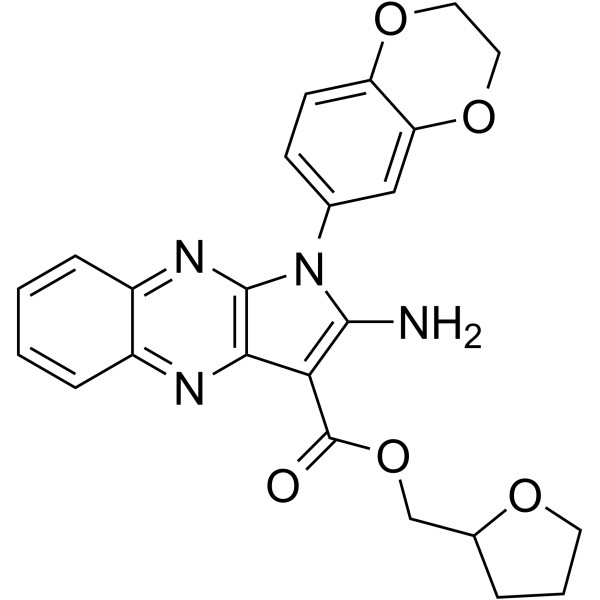
-
GC65987
EP3 antagonist 3
EP3-Antagonist 3 (Verbindung 2) ist ein oral aktiver, potenter und selektiver EP3-Antagonist mit einem pKi von 8,3. EP3-Antagonist 3 zeigt hervorragende pharmakokinetische Eigenschaften. EP3-Antagonist 3 kann fÜr die Forschung zur Überaktiven Blase (OAB) verwendet werden.

-
GC60152
Epibetulinic acid
EpibetulinsÄure zeigt starke inhibitorische Wirkungen auf die Produktion von NO und Prostaglandin E2 (PGE2) in Maus-Makrophagen (RAW 264.7), die mit bakteriellem Endotoxin mit IC50-Werten von 0,7 bzw. 0,6 μM stimuliert wurden.
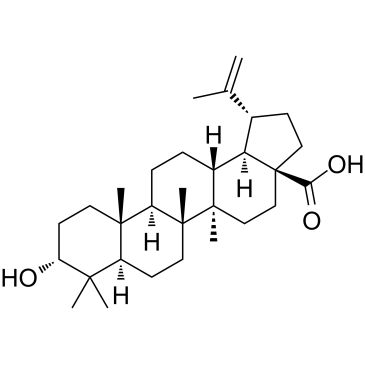
-
GC12101
Epoprostenol
Epoprostenol (Prostaglandin I2 (Natriumsalz)), die synthetische Form des natÜrlichen Prostaglandinderivats Prostacyclin (Prostaglandin I2), ist weltweit zur Behandlung der pulmonalen arteriellen Hypertonie (PAH) zugelassen.
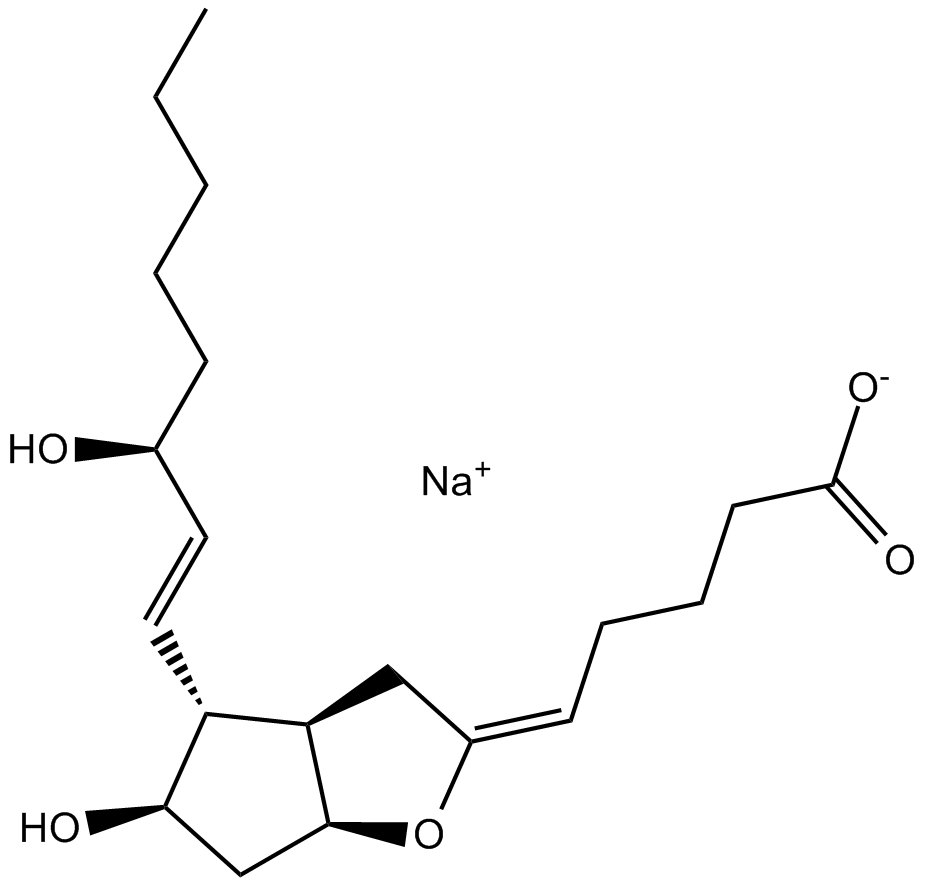
-
GC50722
ER 819762
ER 817692 ist ein oral aktiver, hochselektiver Prostaglandin E2 (PGE2) EP4-Rezeptorantagonist mit einem EC50-Wert von 70 nM gegen den humanen EP4-Rezeptor.
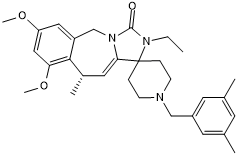
-
GC32540
Etersalate (Eterylate)
Etersalat (Eterylate) hemmt die BlutplÄttchenfunktion und senkt die Thromboxan A2 (TXA2)-Spiegel.
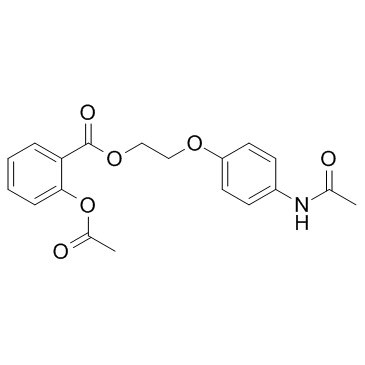
-
GC16170
Ethamsylate
Ethamsylat ist ein blutstillendes Medikament, das auch die Biosynthese und Wirkung dieser Prostaglandine hemmt.
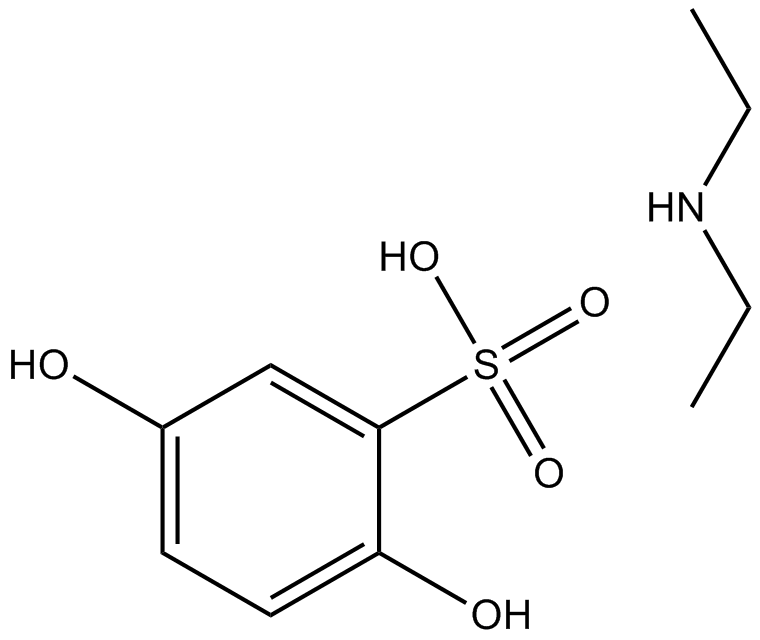
-
GC19147
Evatanepag
Evatanepag (CP-533536) ist ein potenter und selektiver EP2-Rezeptoragonist, der kein Prostanoid ist.
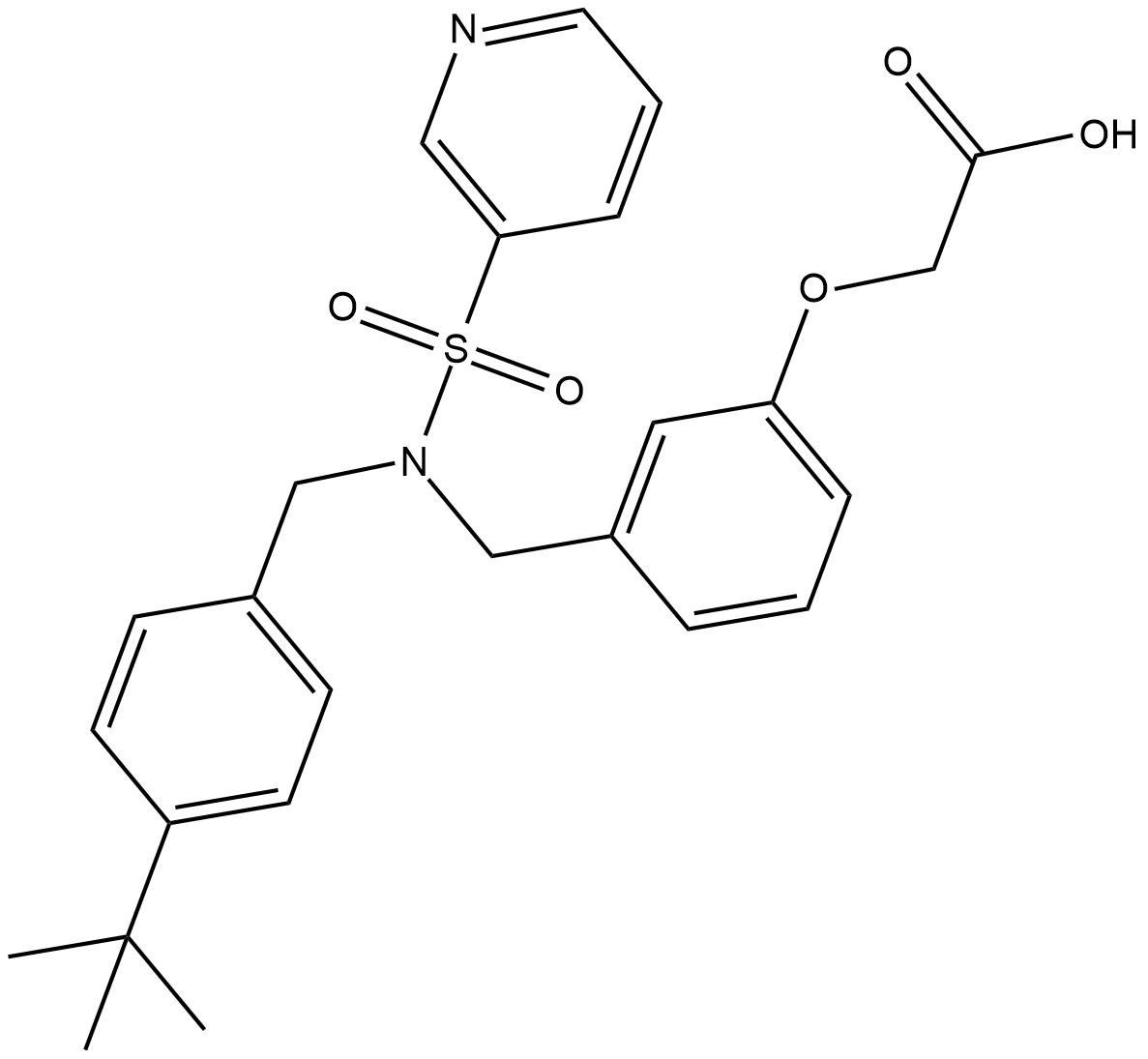
-
GC19153
Fevipiprant
Fevipiprant (QAW039, NVP-QAW039) ist ein oral aktiver, selektiver, reversibler Prostaglandin-D2-(DP2)-Rezeptorantagonist mit einem Kd-Wert von 1,14 nM.
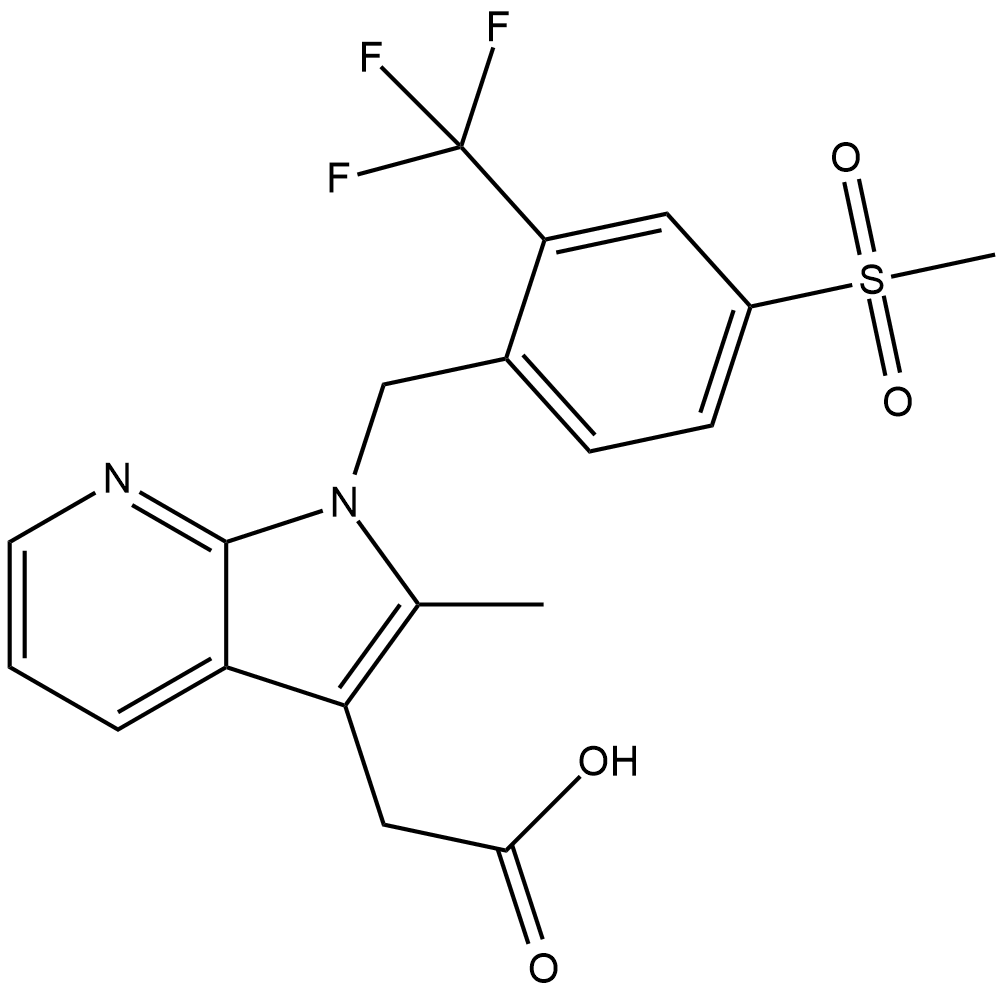
-
GC38379
Furprofen
Furprofen ist ein nichtsteroidales Antirheumatikum (NSAID) mit analgetischen Eigenschaften.
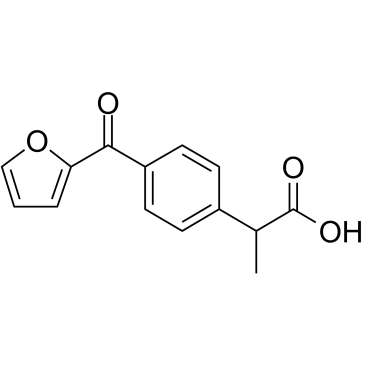
-
GN10069
Ginsenoside Ro
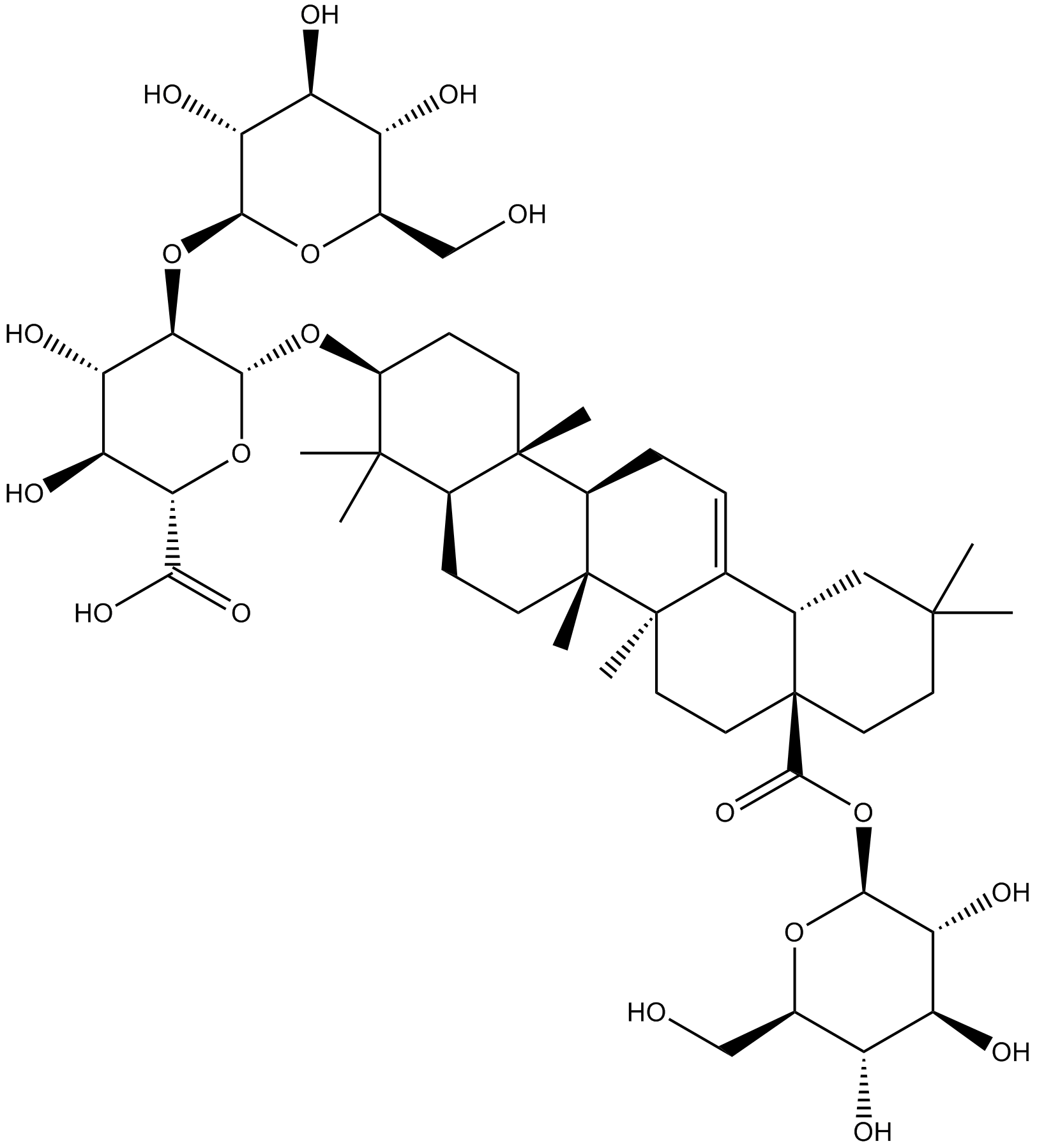
-
GC30307
GSK-269984A
GSK-269984A ist ein Antagonist des Prostaglandin-E2-Rezeptors 1 (EP1) mit einem pIC50 von 7,9.
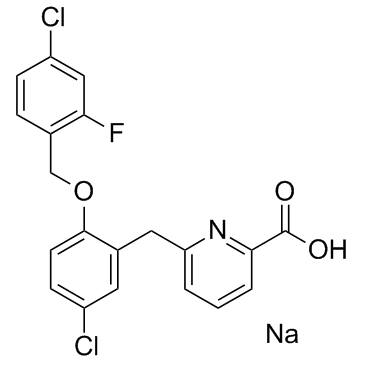
-
GC30299
GSK726701A
GSK726701A ist ein neuartiger partieller Agonist des Prostaglandin-E2-Rezeptors 4 (EP4) mit einem pEC50 von 7,4.
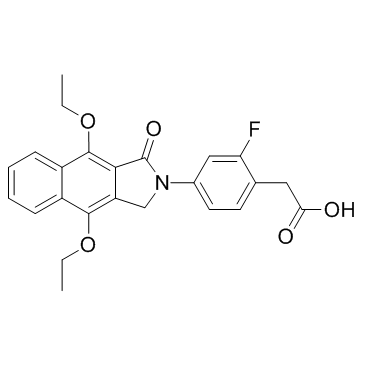
-
GC14812
GW 627368
GW 627368 (GW 627368X) ist ein neuer, potenter und selektiver kompetitiver Antagonist des Prostanoid-EP4-Rezeptors mit zusätzlicher Affinität zu humanen TP-Rezeptoren, mit pKi-Werten von 7,0 und 6,8 \u200b\u200bfür humane Prostanoid-EP4- bzw. TP-Rezeptoren.
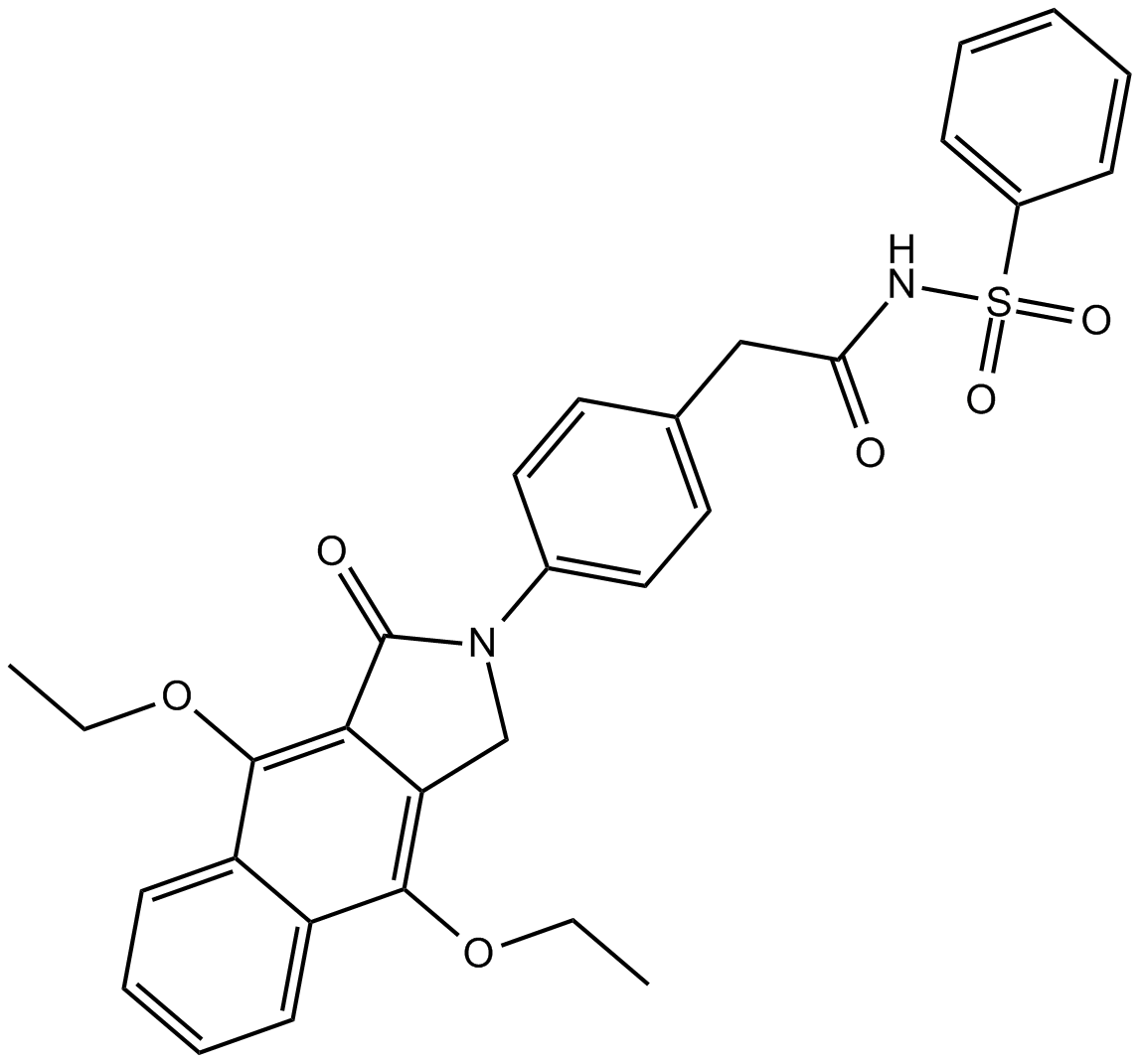
-
GC68349
Ifetroban sodium
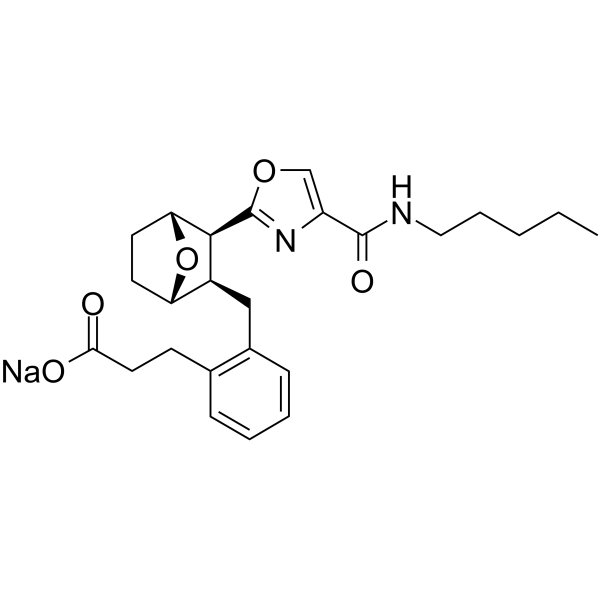
-
GC15911
Iloprost
Iloprost (ZK 36374; Ciloprost) ist ein Prostacyclin (PGI2)-Analogon, das an der Embryonalentwicklung und EntzÜndungsverbesserung beteiligt ist und die Tumormetastasierung hemmt.
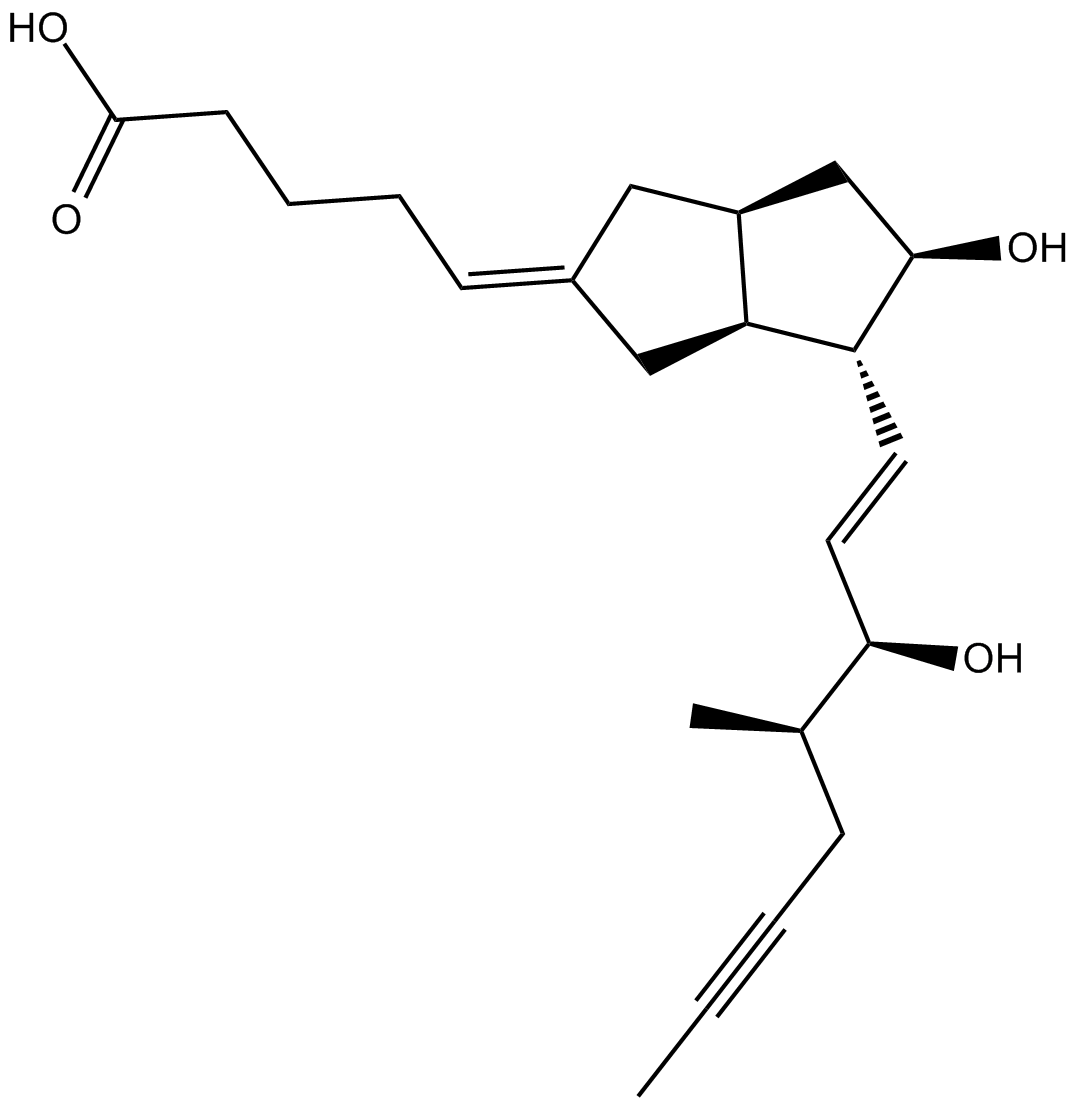
-
GC36379
KAG-308
KAG-308 ist ein potenter selektiver und oral aktiver Agonist des EP4-Rezeptors (ein Prostaglandin-E2-Rezeptor-Subtyp), unterdrÜckt Kolitis und fÖrdert die histologische Schleimhautheilung, hemmt wirksam die TNF-α-Produktion.
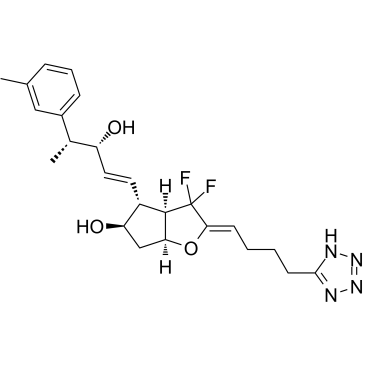
-
GC32653
KF 13218
KF 13218 ist ein potenter, selektiver und langanhaltender Inhibitor der Thromboxan B2 (TXB2)-Synthase mit einem IC50-Wert von 5,3±1,3 nM.
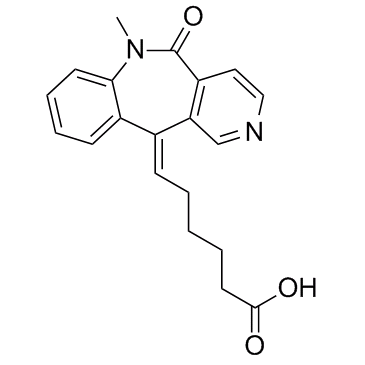
-
GC31983
KP496
KP496 ist ein selektiver dualer Antagonist fÜr den Leukotrien-D4-Rezeptor und den Thromboxan-A2-Rezeptor.
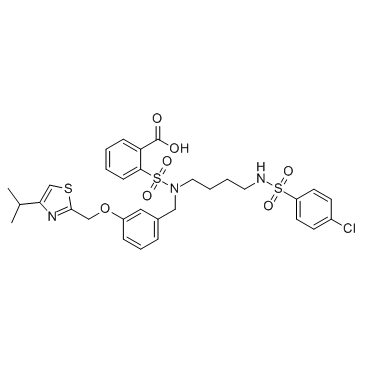
-
GC62667
KW-8232
KW-8232, ein oral aktiver Wirkstoff gegen Osteoporose, kann die Biosynthese von PGE2 reduzieren.
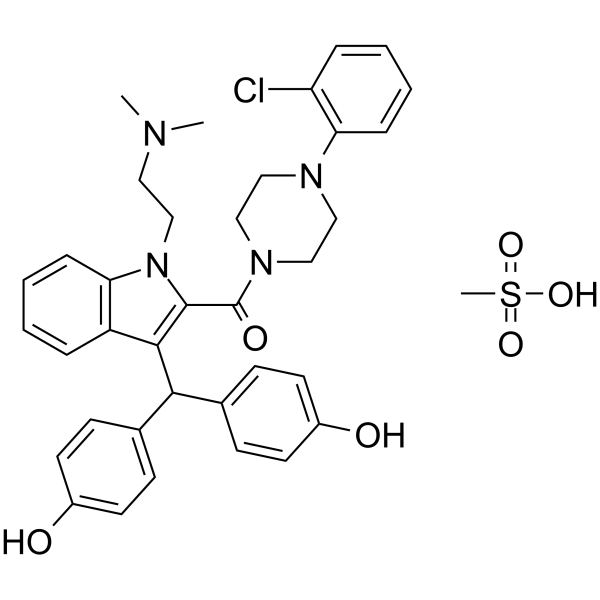
-
GC31633
KW-8232 free base
Die freie Base KW-8232, ein oral wirksames Mittel gegen Osteoporose, kann die Biosynthese von PGE2 reduzieren.
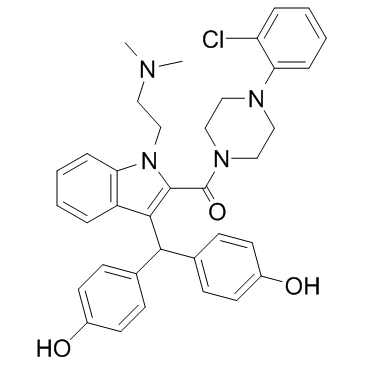
-
GC31768
L 888607
L 888607 ist ein potenter, selektiver, stabiler und oral aktiver CRTH2-Agonist.
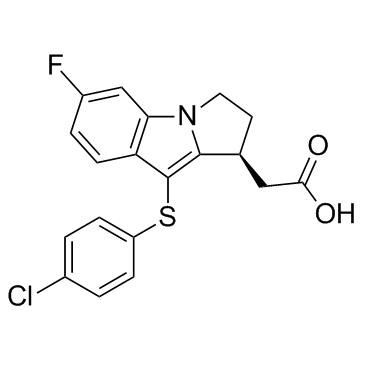
-
GC31975
L 888607 Racemate
L 888607 Racemate ist ein selektiver Antagonist des Prostaglandin-D2-Rezeptor-Subtyps 1 (DP1) mit einem Kis von 132 nM und 17 nM fÜr den DP1- bzw. Thromboxan-A2-Rezeptor (TP).
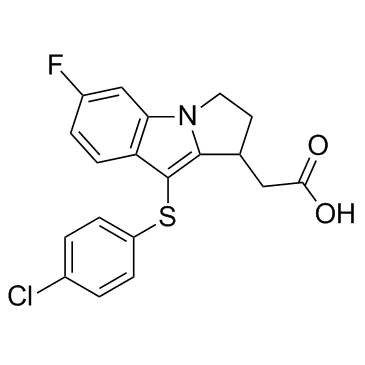
-
GC14173
L-161,982
L-161,982 ist ein selektiver EP4-Rezeptorantagonist.
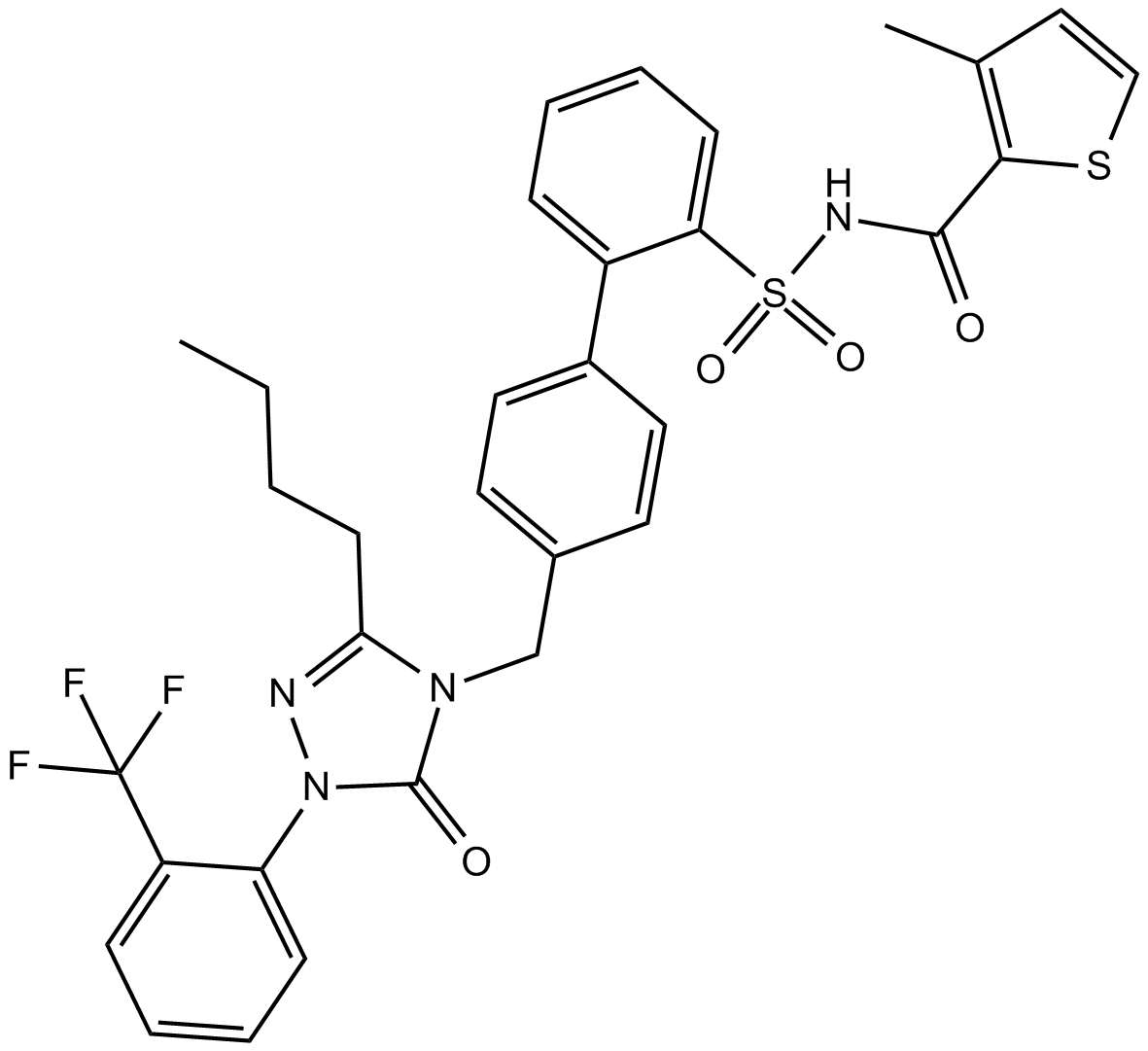
-
GC13067
L-655,240
thromboxane A2/prostaglandin endoperoxide receptor antagonist
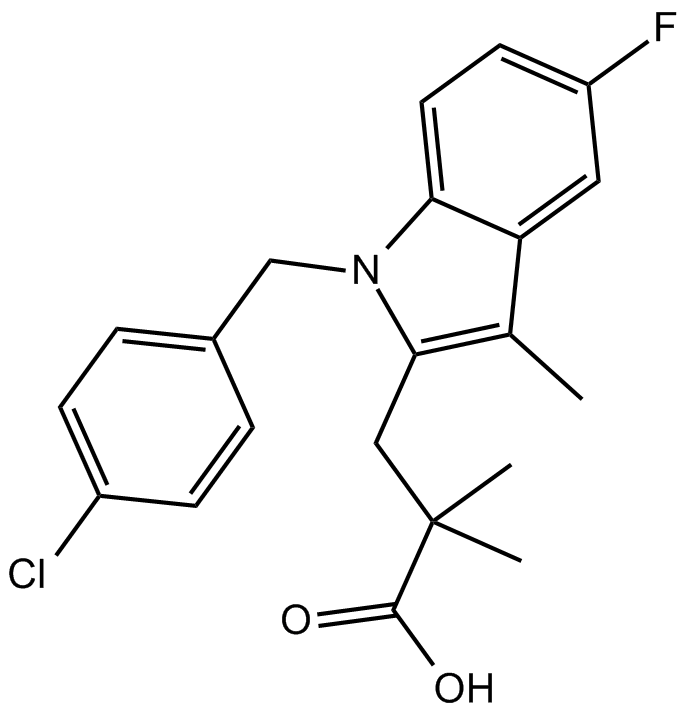
-
GC13609
L-670,596
thromboxane A2/prostaglandin endoperoxide receptor antagonist
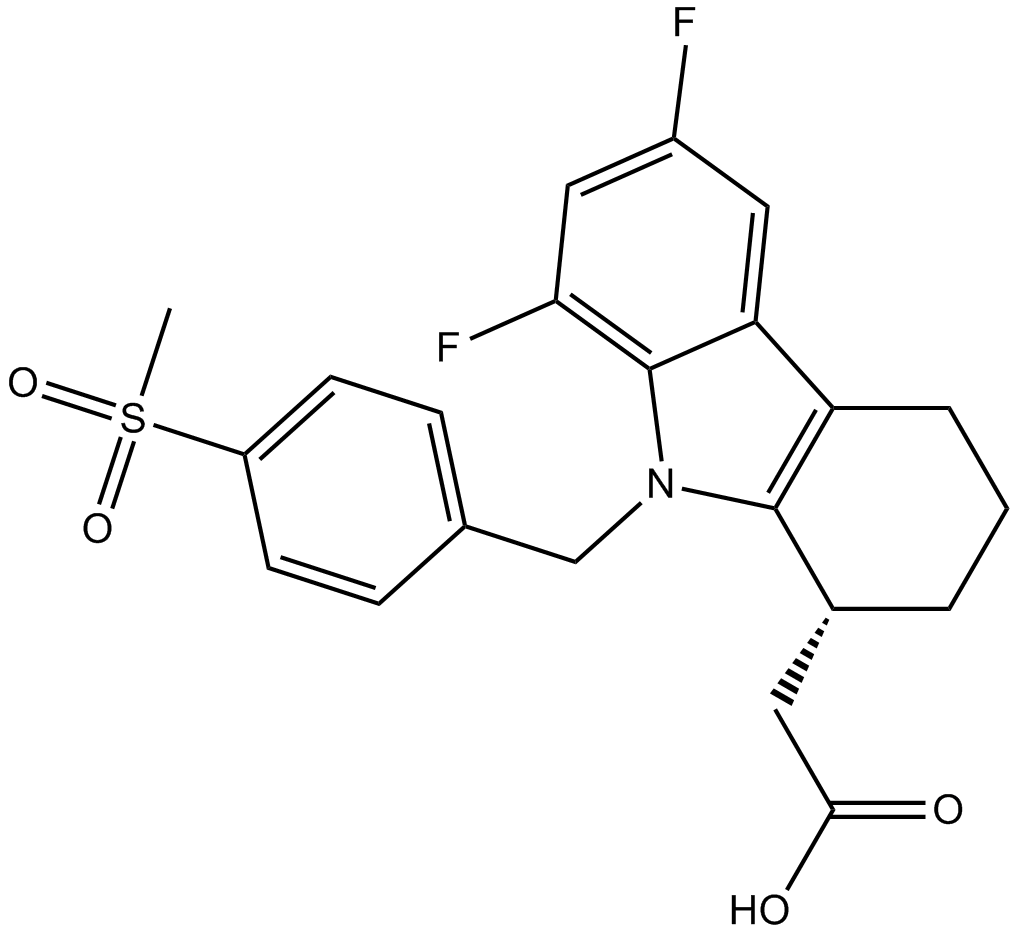
-
GC10304
L-798,106
L-798,106 ist ein potenter und hochselektiver Prostanoid-EP3-Rezeptorantagonist (Ki \u003d 0,3 nM), er hat auch mikromolare Aktivitäten an den EP4-, EP1- und EP2-Rezeptoren mit Ki-Werten von 916 nM, \u003e5000 nM bzw. \u003e5000 nM.
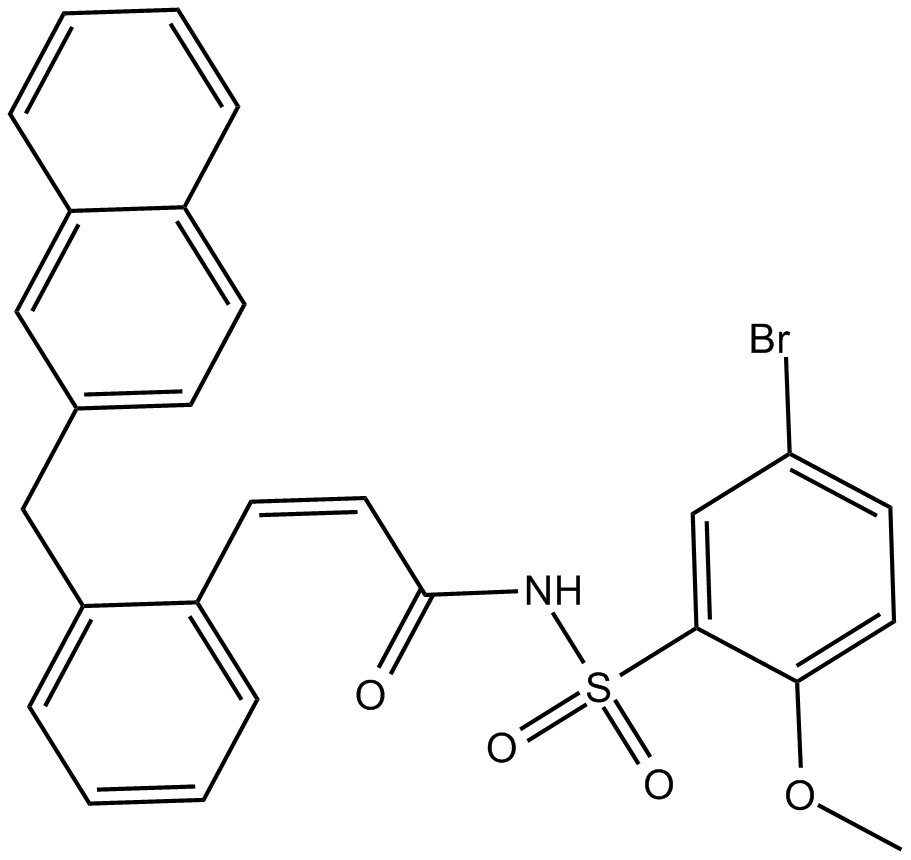
-
GC44021
L-826,266
L-826,266 ist ein selektiver und kompetitiver EP3-Rezeptorantagonist.

-
GC39632
Laflunimus
Laflunimus (HR325) ist ein Immunsuppressivum und ein Analogon des Leflunomid-aktiven Metaboliten A77 1726.
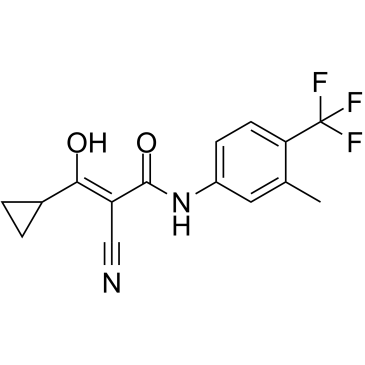
-
GC11833
Laropiprant
A potent, selective DP1 receptor antagonist
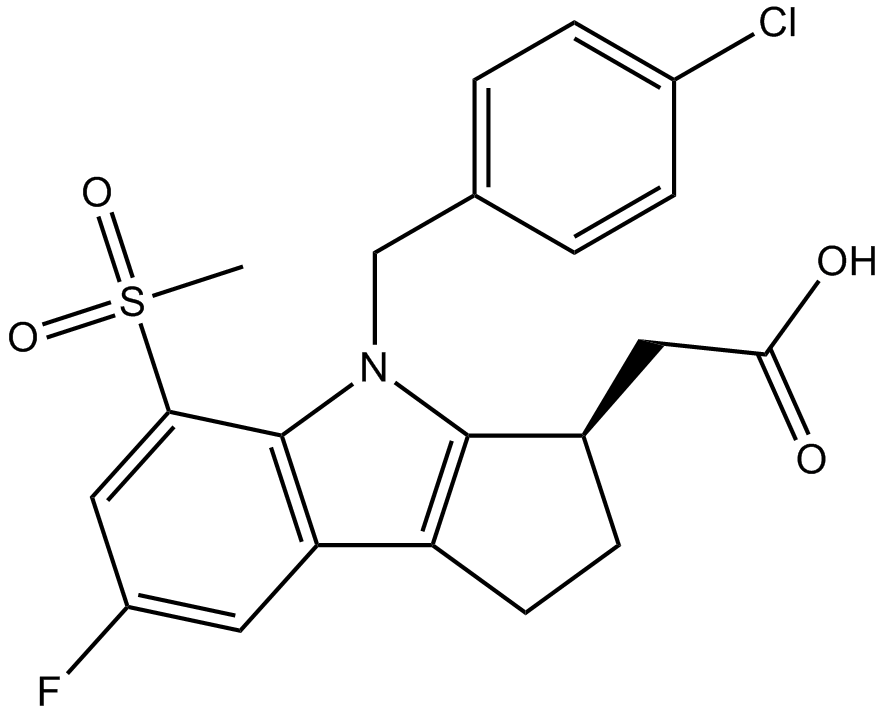
-
GC14004
Latanoprost
Latanoprost (PHXA41) ist ein Prostaglandin-F2α-Analogon und ein Agonist fÜr den FP-Prostanoidrezeptor und senkt den Augeninnendruck (IOP).
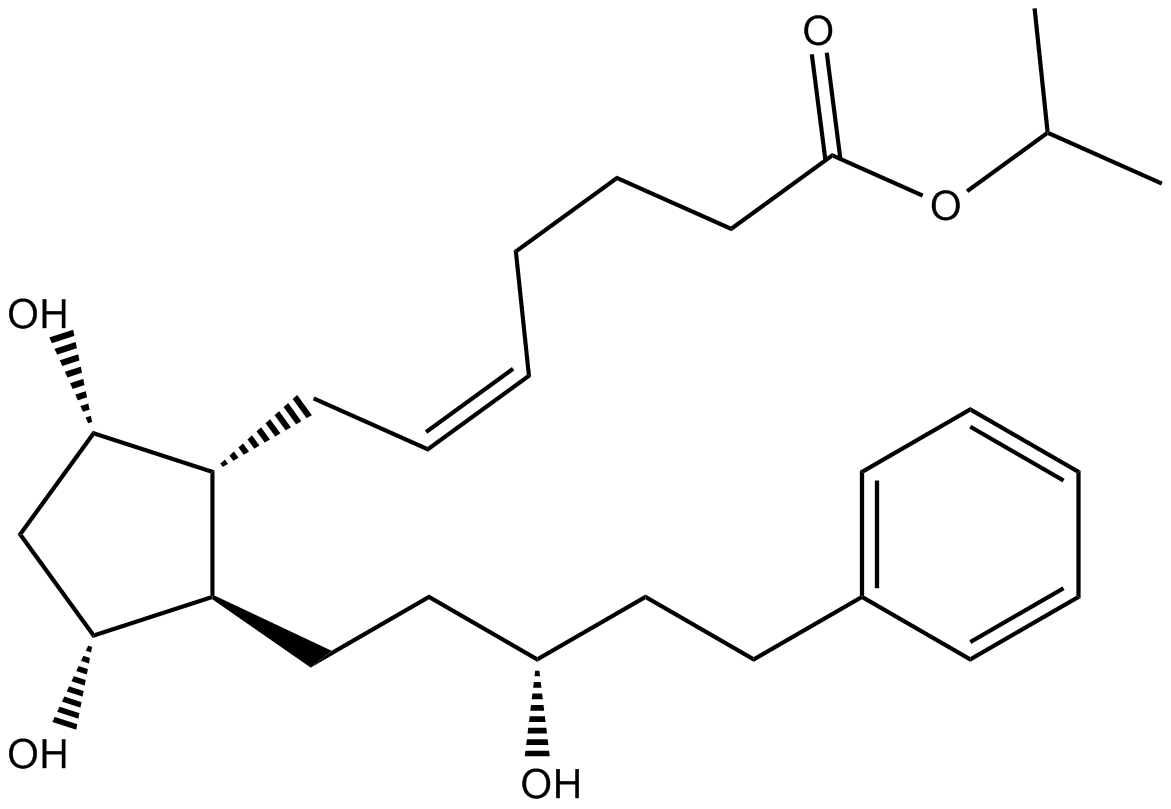
-
GC41229
Latanoprost (free acid)
Latanoprost (freie SÄure), ein Analogon von Prostaglandin (PG) F2α, ist ein selektiver Prostanoidrezeptor (FP)-Agonist, der spezifisch den FP-PG-Rezeptor aktiviert.
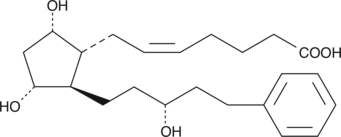
-
GC40854
Latanoprost Lactone Diol
Latanoprost-Lactondiol ist ein Zwischenprodukt bei der Synthese von Latanoprost.

-
GC33550
LCB-2853
LCB-2853 ist ein Antagonist des Thromboxan A2 (TXA2)-Rezeptors mit gerinnungshemmenden und antithrombotischen AktivitÄten.
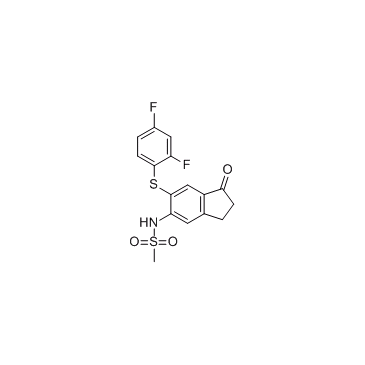
-
GC60225
Licarin A
Licarin A ((+)-Licarin A), ein Neolignan, reduziert signifikant und dosisabhÄngig die TNF-α-Produktion (IC50=12,6 μM) in mit Dinitrophenyl-Humanserumalbumin (DNP-HSA) stimulierten RBL-2H3-Zellen .
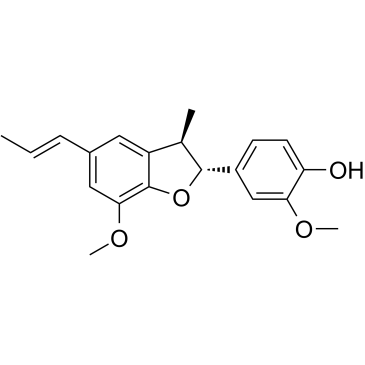
-
GC62493
MF-766
MF-766 ist ein hochpotenter, selektiver und oral aktiver EP4-Antagonist mit einem Ki von 0,23 nM.
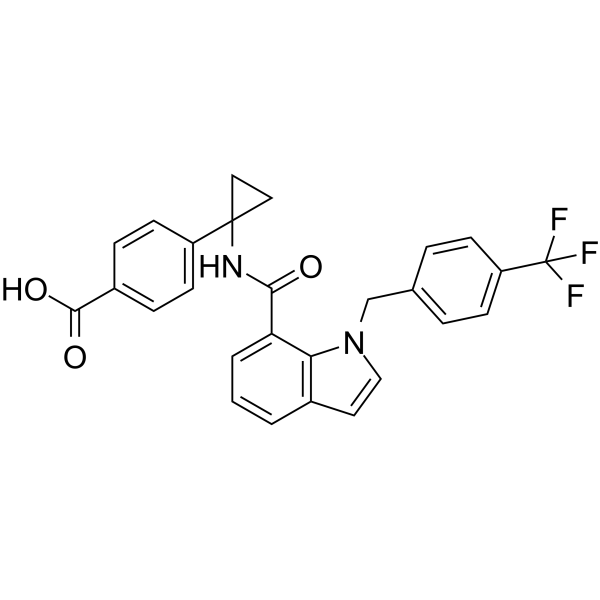
-
GC16800
MF498
MF498 ist ein neuartiger und selektiver E-Prostanoid-Rezeptor 4 (EP4-Rezeptor)-Antagonist, der eine starke BindungsaffinitÄt fÜr den EP4-Rezeptor mit einem Ki von 0,7 nM aufweist.
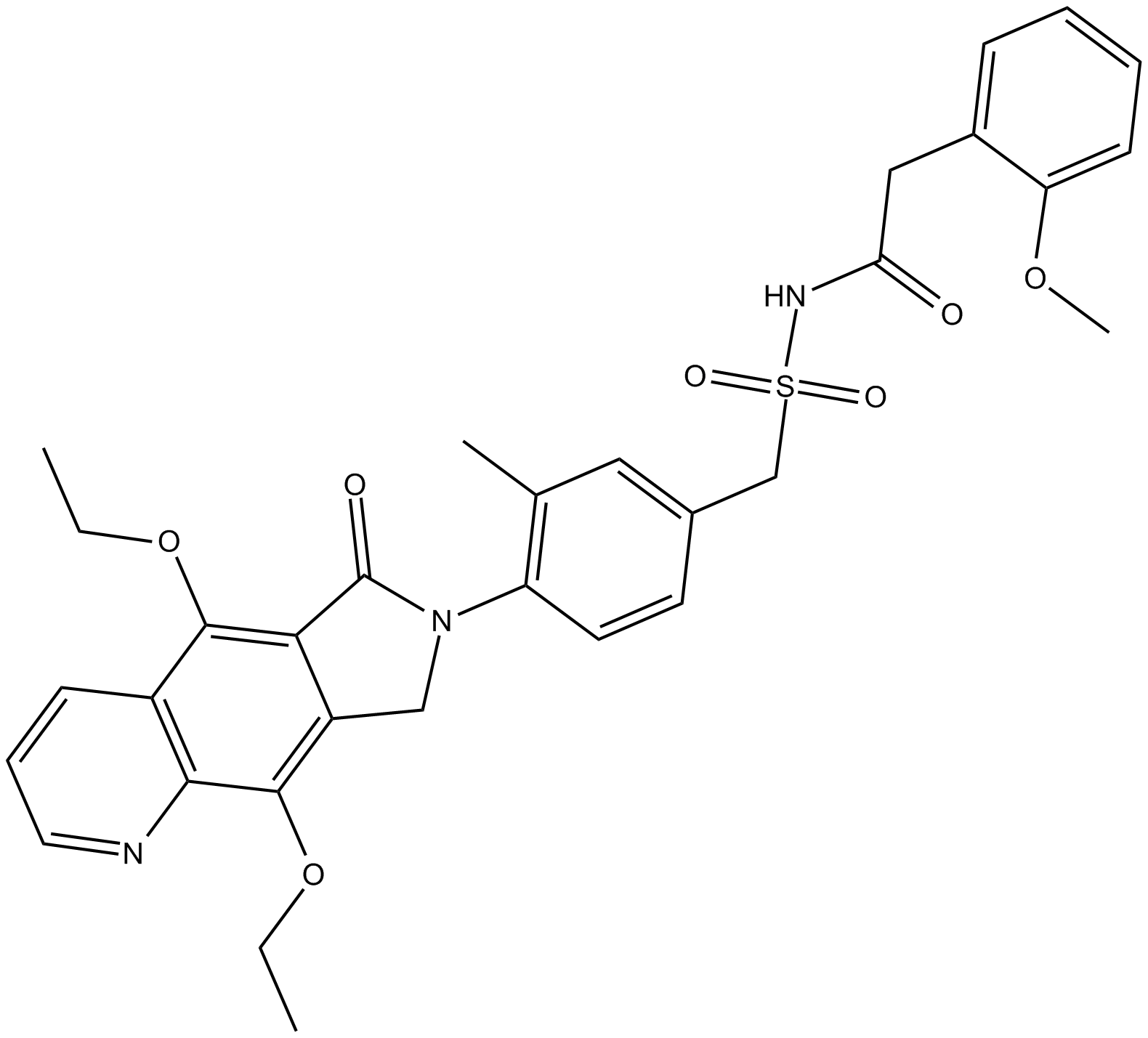
-
GC16074
Misoprostol
Misoprostol (SC-29333) ist ein oral aktives synthetisches Prostaglandin E1 (PGE1)-Analogon, das fÜr die Erforschung von MagengeschwÜren verwendet wird.
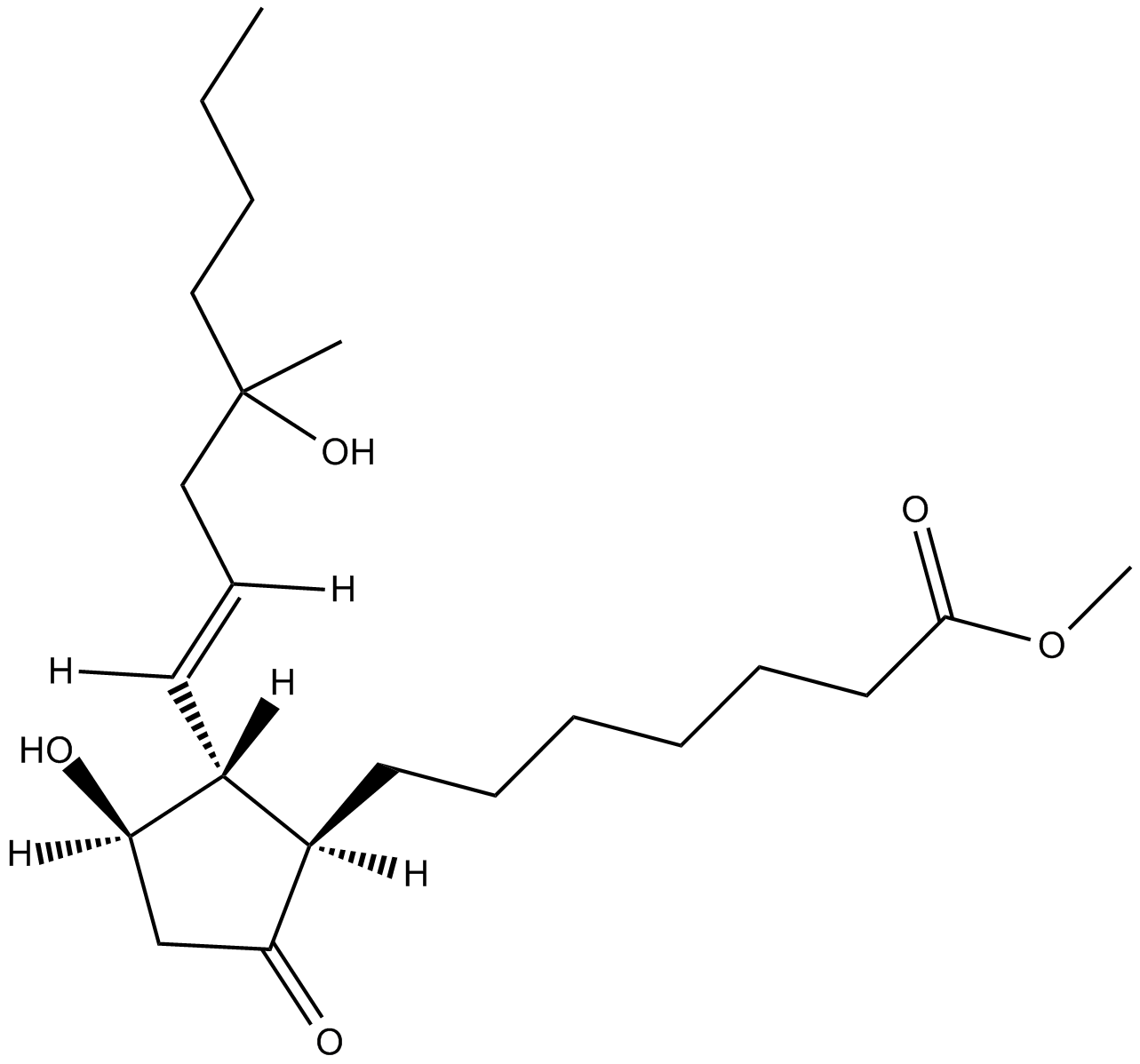
-
GC41442
Misoprostol (free acid)
Misoprostol (freie SÄure) ist ein aktiver Metabolit von Misoprostol.



